Cyprus is home to a variety of bird species, some of which are endemic to the island. These birds are a source of natural beauty and vitality, bringing life and colour to the diverse ecosystems that make up the island.
In addition to the native species, Cyprus is known for its large population of migratory birds, which pass through each year on their way to their wintering grounds. This article provides an overview of the birds of Cyprus and how they are connected to the island’s unique habitats.
1. Cyprus Wheatear
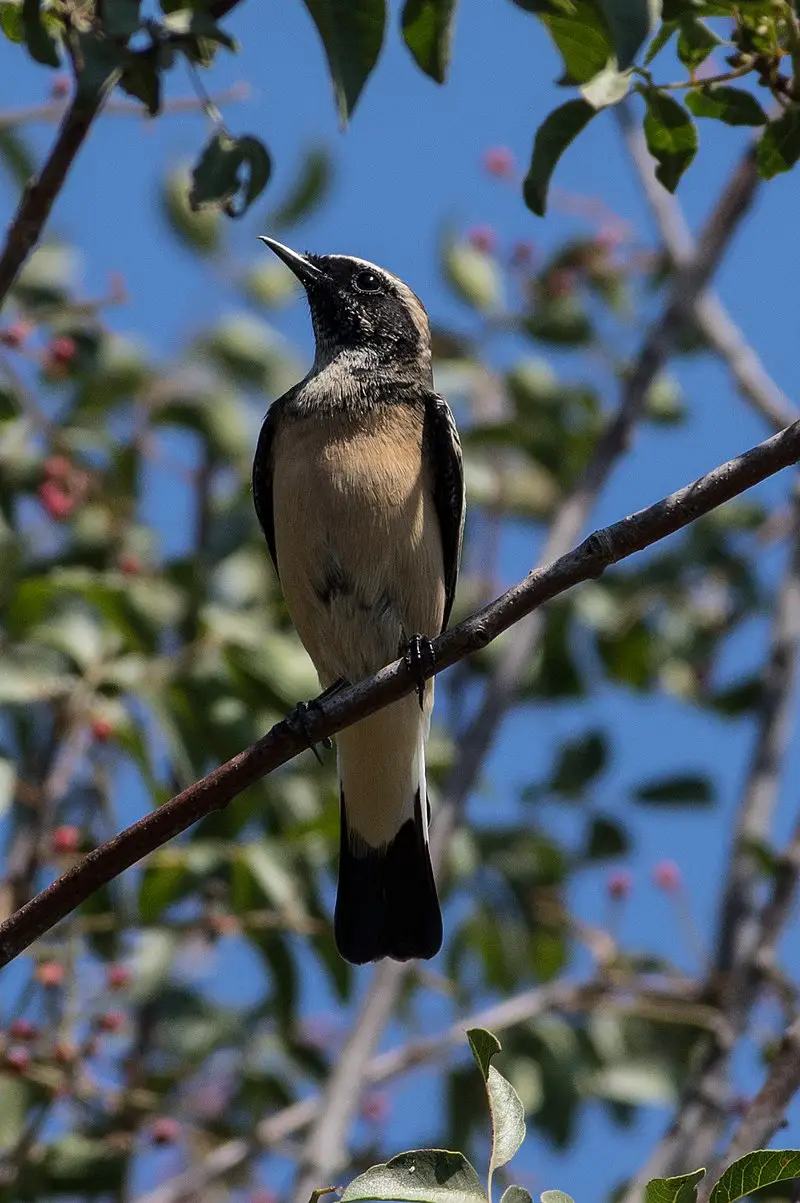
The Cyprus wheatear is a small passerine bird that can be found in the Old World. It measures 14–15 cm long and was previously classified as part of the thrush family Turdidae, but it has since been reclassified to Muscicapidae.
Its plumage mainly consists of black, white, and gray feathers with a distinctive pied pattern on its wings.
This species is endemic to Cyprus where it prefers open grasslands or scrubland areas for feeding purposes.
It typically feeds on insects such as ants and beetles along with other invertebrates like spiders which are collected from low vegetation or bare ground near rocks or walls.
The breeding season usually occurs between March-July when males will sing from perches located high up in trees throughout their territory in order to attract potential mates.
Scientific classification:
| Kingdom | Animalia |
| Phylum | Chordata |
| Class | Aves |
| Order | Passeriformes |
| Family | Muscicapidae |
| Genus | Oenanthe |
| Species | O. cypriaca |
2. Shrike
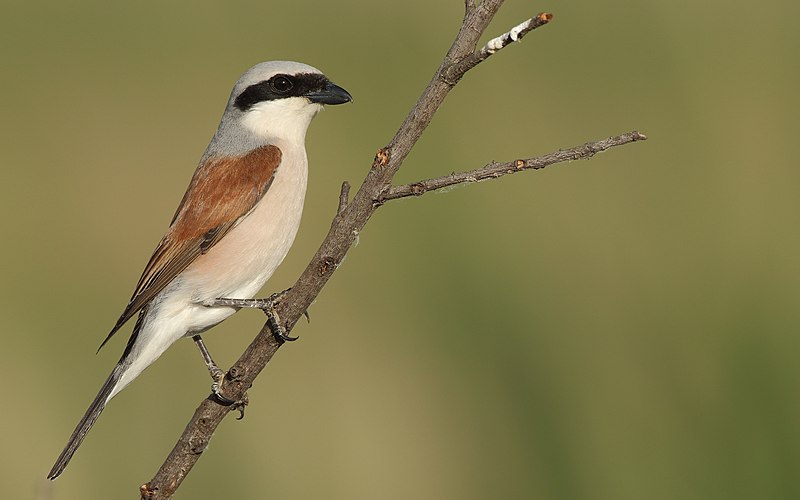
Shrikes are small passerine birds of the family Laniidae, with 34 species in four genera. They get their name from Old English word “scrīc”, which refers to their shriek-like call.
These birds have earned the nickname ‘butcherbirds’ due to their feeding habits; they impale prey on thorns or barbed wire fences for later consumption.
Shrikes also tend to be aggressive predators and hunt a wide range of animals such as insects, small reptiles, rodents and even other smaller bird species.
In terms of physical appearance, these songbirds can vary greatly depending on the specific genus but usually boast a large hooked bill atop an impressive crest along with bright colors like gray, black or brownish hues across its feathers.
It’s clear shrike is quite remarkable creature that has gained notoriety for both hunting prowess and distinctive vocalizations.
Scientific classification:
| Kingdom | Animalia |
| Phylum | Chordata |
| Class | Aves |
| Order | Passeriformes |
| Superfamily | Corvoidea |
| Family | Laniidae Rafinesque, 1815 |
3. Sylviid Warblers
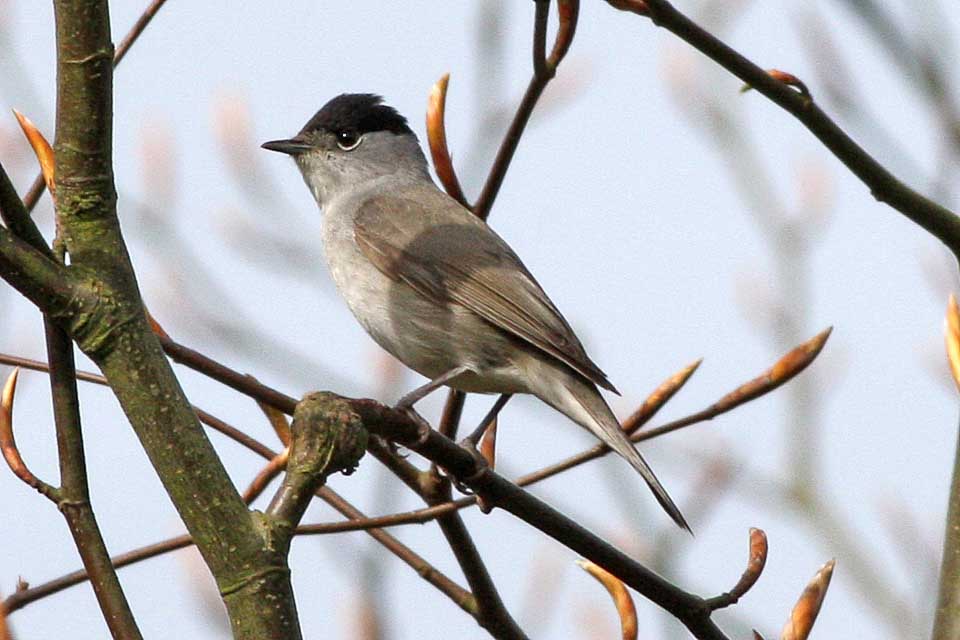
The Sylviid warblers are a family of passerine birds found in Eurasia and Africa. They include the typical warblers as well as babblers that were formerly part of the Old World babbler family.
These birds have slender bodies, pointed wings, long tails and strong legs adapted for ground-dwelling habits like running or hopping along branches.
The male often has bright colors while females are usually duller in coloration with more muted plumage patterns than males.
Some species also show sexual dimorphism where one sex may be larger or smaller than its counterpart; for instance some species may have longer tail feathers on the female side compared to their male counterparts.
Many members of this group feed on insects but some specialize on seeds, fruits, nectar or even frogs.
Scientific classification:
| Kingdom | Animalia |
| Phylum | Chordata |
| Class | Aves |
| Order | Passeriformes |
| Superfamily | Sylvioidea |
| Family | Sylviidae Leach, 1820 |
4. Eleonora’s Falcon
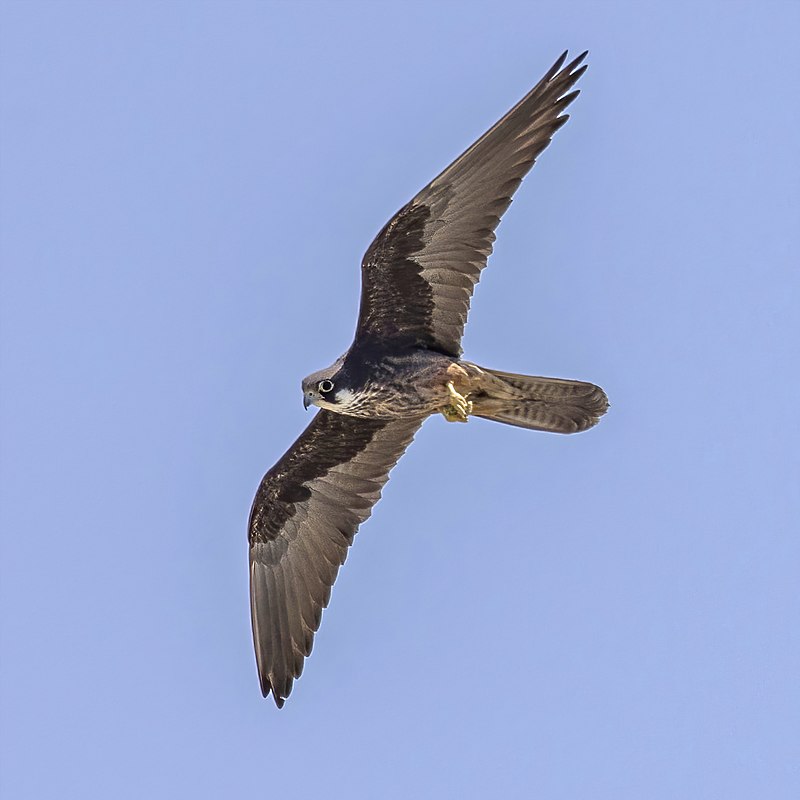
Eleonora’s falcon is a medium-sized bird of prey that belongs to the hobby group of similar species. It has distinct features such as its light brown back, white belly and dark eye stripe.
This stunning creature can be found in parts of Europe, North Africa and Asia Minor where it feeds mainly on lizards, large insects and small birds.
Its conservation status is currently stable due to successful breeding programs across many countries which have helped prevent any further declines in population size.
Eleonora’s Falcon also plays an important role in maintaining balance within ecosystems by controlling pest populations like mice or locusts.
All these attributes make this beautiful raptor a truly remarkable animal worthy of admiration.
Scientific classification:
| Kingdom | Animalia |
| Phylum | Chordata |
| Class | Aves |
| Order | Falconiformes |
| Family | Falconidae |
| Genus | Falco |
| Species | F. eleonorae |
5. Greater Flamingo
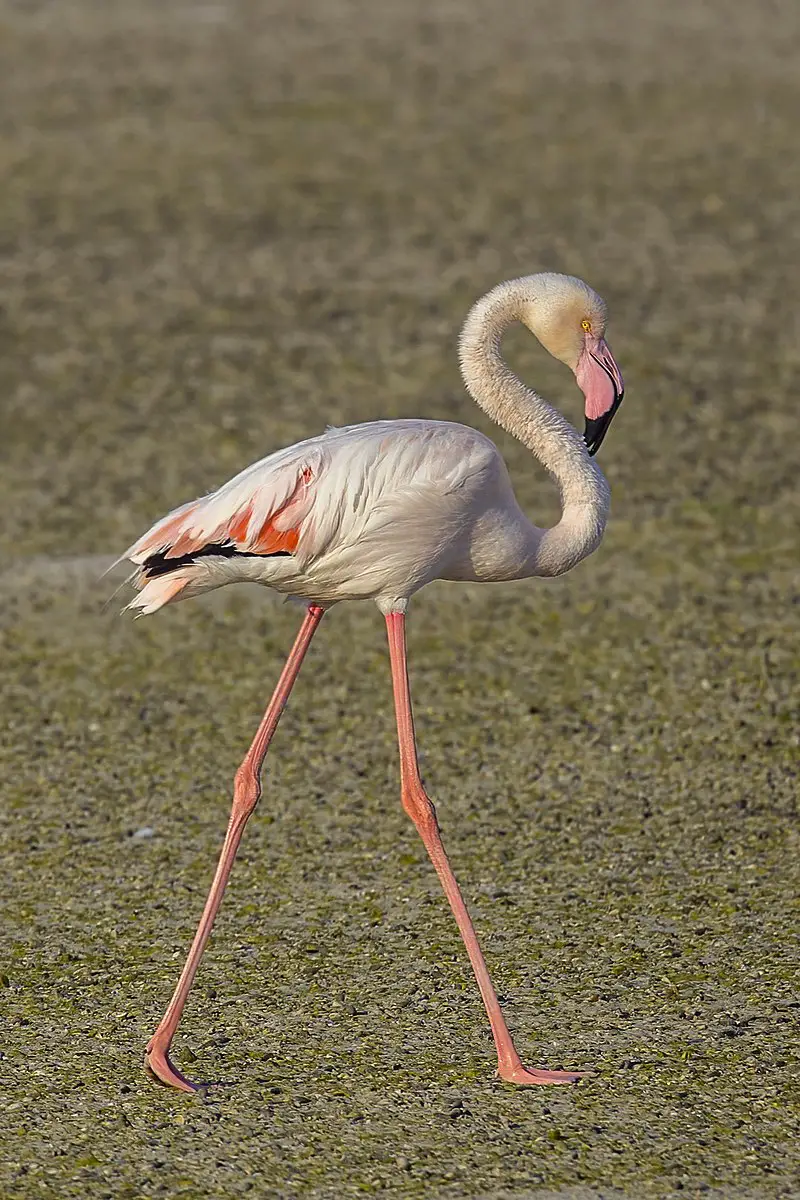
The Greater Flamingo is an impressive bird belonging to the Phoenicopteridae family. It’s one of the most widespread and largest species among flamingos with a range covering Africa, India, Middle East and southern parts of Europe.
The bird was described by Peter Simon Pallas in 1811 but it wasn’t until recently that it was distinguished from American Flamingo (Phoenicopterus ruber), due to differences in coloration between them.
This large-bodied wading bird stands tall at 1m on average and has bright pink plumage adorning its long neck and legs which gives way to black wing tips when flying.
Its diet mainly consists of algae, crustaceans as well as small aquatic animals like mollusks found while they feed along shallow lakes or lagoons where they live their social lives surrounded by others just like them.
Scientific classification:
| Kingdom | Animalia |
| Phylum | Chordata |
| Class | Aves |
| Order | Phoenicopteriformes |
| Family | Phoenicopteridae |
| Genus | Phoenicopterus |
| Species | P. roseus |
6. Nightjars
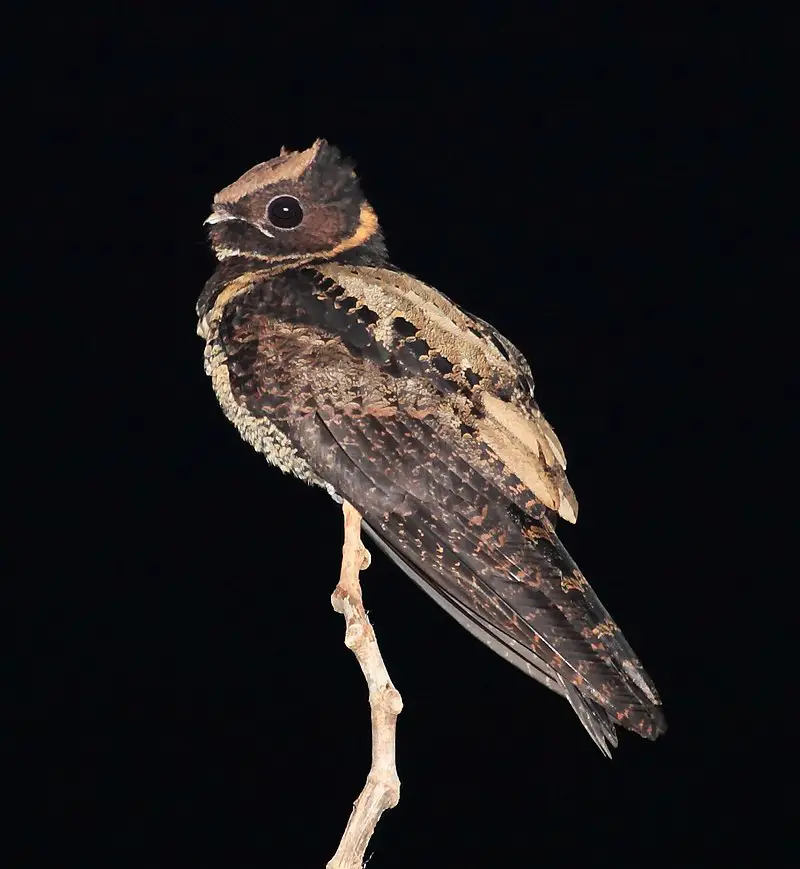
Nightjars are fascinating nocturnal or crepuscular birds belonging to the Caprimulgidae family. These medium-sized birds have long wings, short legs and very small bills.
They can be found across many parts of the world in forests, grasslands and scrubland habitats.
Nightjars feed on insects such as moths, beetles, crickets and cicadas which they catch with their sharp eyesight during night time flights over open fields when hunting for food.
Their scientific name ‘Caprimulgidae’ is derived from an old folktale that claims these birds suck milk from goats.
In reality though, they are harmless creatures who pose no threat to livestock whatsoever.
Nightjars make a variety of different calls ranging from whistles to chirps all throughout the night – adding further mystery to this amazing species.
Scientific classification:
| Kingdom | Animalia |
| Phylum | Chordata |
| Class | Aves |
| Clade | Strisores |
| Order | Caprimulgiformes Ridgway, 1881 |
| Family | Caprimulgidae Vigors, 1825 |
7. Shorebirds
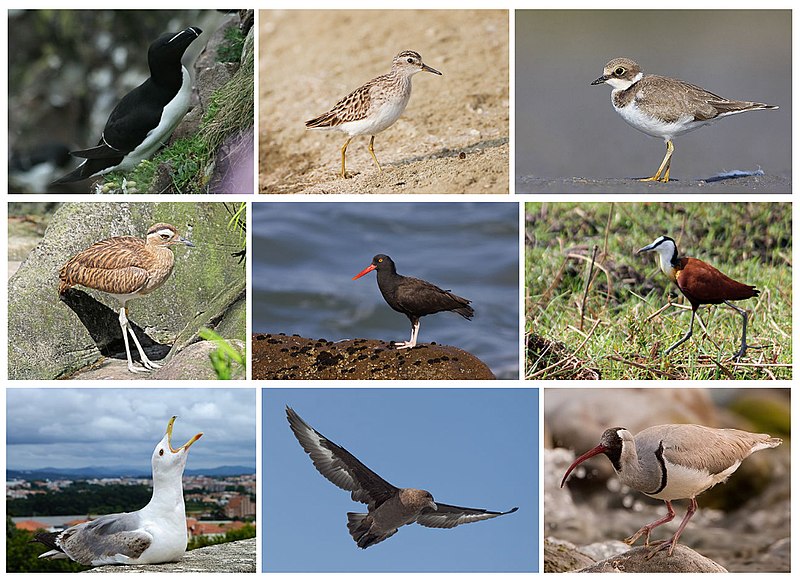
Shorebirds, a diverse group of birds in the Charadriiformes order, are found near water on every continent except Antarctica.
These small to medium-sized birds feed mainly on invertebrates and other small animals but can also be pelagic seabirds or inhabit deserts.
Shorebirds use their long bills to probe mudflats for food like worms and mollusks while some species plunge into the ocean’s depths in search of crustaceans such as crabs and shrimp.
They have strong legs equipped with webbed feet which allow them to move quickly when searching for prey across wetlands, sandbars, beaches and swamps.
Their feathers make them well adapted to life by land or sea due to its hydrophobic nature which helps reduce drag during swimming or flying through windy conditions making it easier for shorebirds survive tough environments around the world.
Scientific classification:
| Kingdom | Animalia |
| Phylum | Chordata |
| Class | Aves |
| Infraclass | Neognathae |
| Clade | Neoaves |
| Clade | Gruimorphae |
| Order | Charadriiformes Huxley, 1867 |
8. Black Francolin
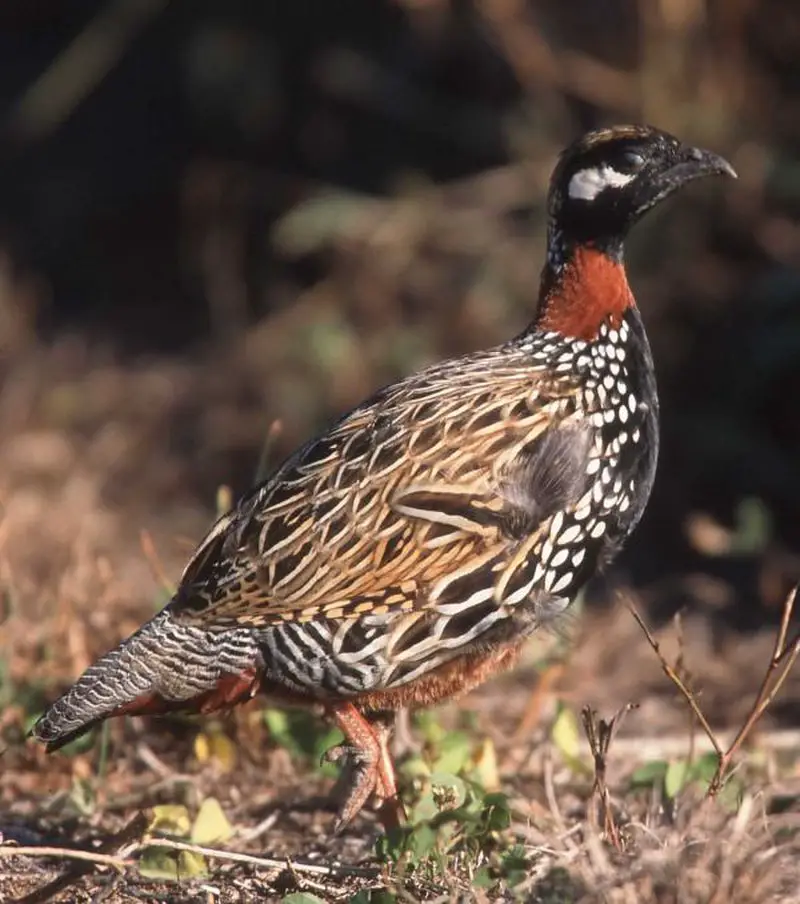
Black francolin is a species of gamebird belonging to the pheasant family. It was once known as black partridge and is now declared as state bird of Haryana, India.
The adult males are generally about 33-36 cm in length with an average weight of 453 gm.
They have glossy black plumage with white spotting on their wings and body parts along with barring patterns on tail feathers which makes them look attractive.
Their call sounds like ‘kattar kattar’ continuously repeated at regular intervals throughout the day during breeding season from April – June when they become highly vocal for mating purpose.
These birds can be found in open grasslands, scrub forests or agricultural fields where plenty of food (mainly insects) is available for survival & reproduction purposes making it one of the most common avifauna across its range countries such as Pakistan, Afghanistan & Nepal etc.
Scientific classification:
| Kingdom | Animalia |
| Phylum | Chordata |
| Class | Aves |
| Order | Galliformes |
| Family | Phasianidae |
| Genus | Francolinus |
| Species | F. francolinus |
9. Sandgrouse
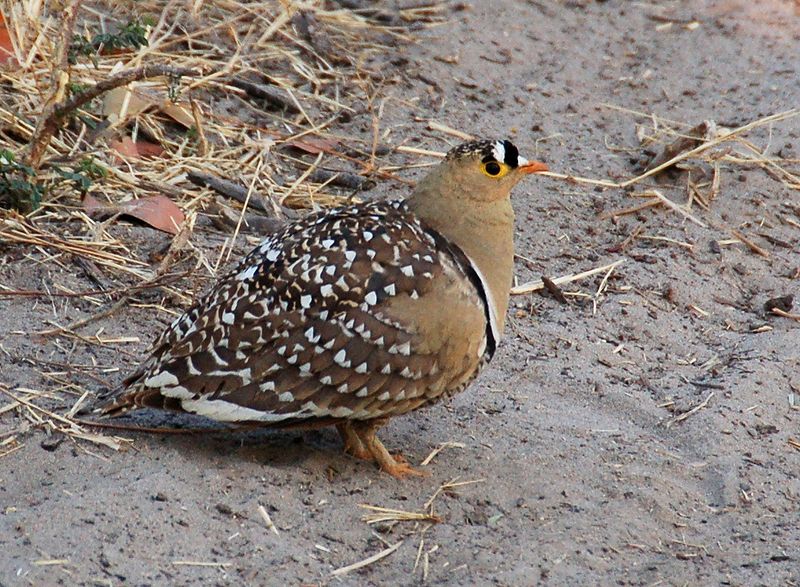
Sandgrouse is birds of the order Pterocliformes, found mainly in Africa and Asia. There are sixteen species belonging to two genera – Syrrhaptes from central Asia and Pterocles from Africa and other Asian countries.
They inhabit treeless areas such as deserts, steppes, scrubland, or savannas and tend to be ground-dwelling birds that feed on seeds.
Sandgrouse has adapted special features for survival in their harsh environment.
They possess well-developed feet with four toes used for walking over hot sand while keeping their body temperature cool at all times by regulating heat loss through their legs.
Their feathers also act like a sponge helping them absorb water before flying long distances back home where they then expel it using specialized glandular secretions located near the wings so that chicks can drink directly from an adult’s breast plumage.
Scientific classification:
| Kingdom | Animalia |
| Phylum | Chordata |
| Class | Aves |
| Clade | Columbimorphae |
| Order | Pterocliformes Huxley, 1868 |
| Family | Pteroclidae Bonaparte, 1831 |
10. Waxwing Birds
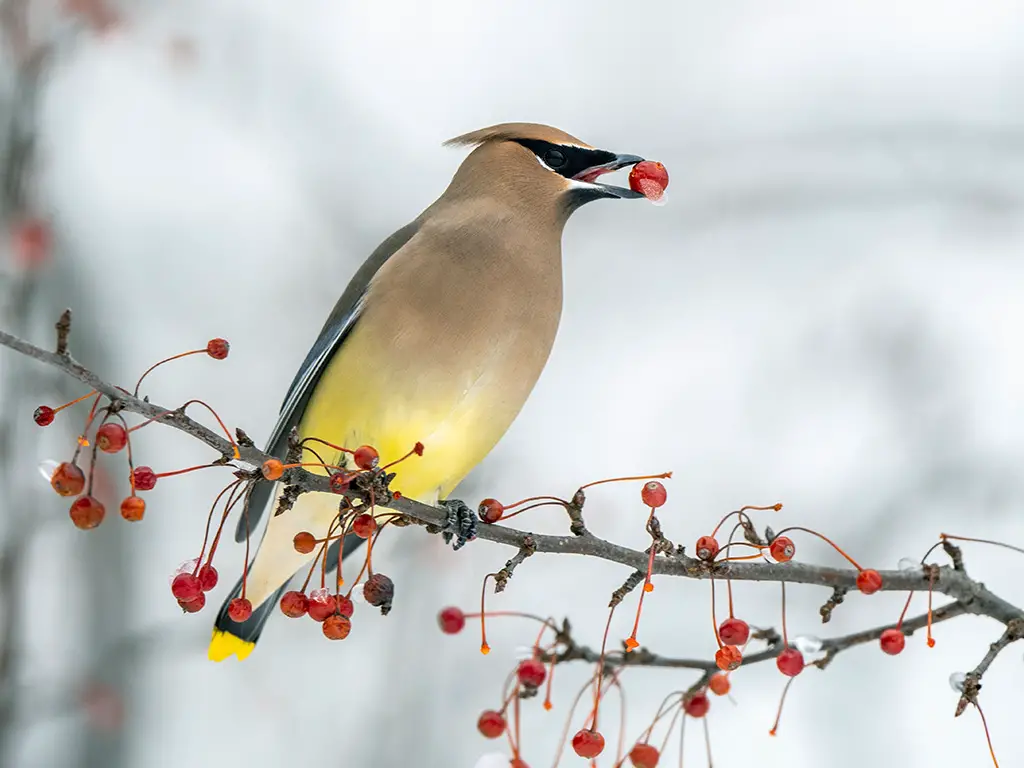
The Waxwing is a small passerine bird known for its wax-like wing feathers. They have pale gray bodies with bright red waxy tips on their wings and tail feathers.
Their heads are crested, which makes them easily recognizable in flight. These birds live primarily in the Northern Hemisphere, ranging from North America to Scandinavia and Siberia during winter months before migrating southward in late summer or early fall.
During migration they can be found around riparian areas as well as urban parks and gardens where food sources such as berries are plentiful.
Waxwings feed mainly on fruits like rowanberries, cedar apples and hawthorn berries but will also take insects when available.
As sociable species these birds often flock together forming large groups of up to hundreds of individuals at times.
11. Panuridae
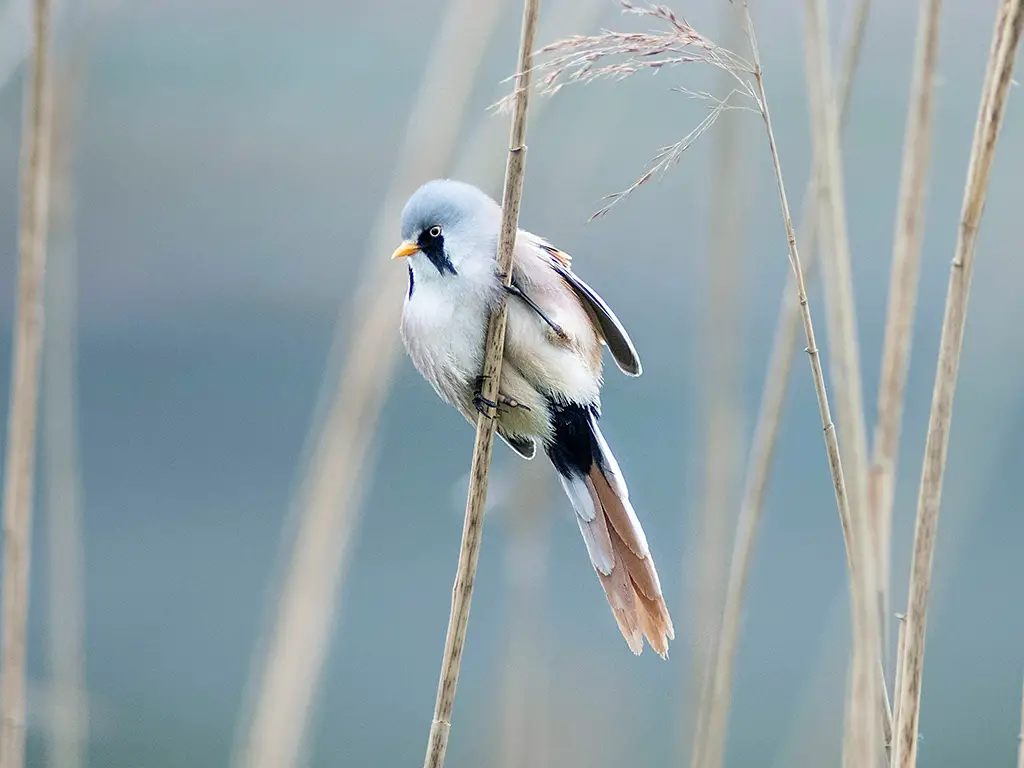
The Waxwing is a small passerine bird known for its wax-like wing feathers. They have pale gray bodies with bright red waxy tips on their wings and tail feathers.
Their heads are crested, which makes them easily recognizable in flight. These birds live primarily in the Northern Hemisphere, ranging from North America to Scandinavia and Siberia during winter months before migrating southward in late summer or early fall.
During migration they can be found around riparian areas as well as urban parks and gardens where food sources such as berries are plentiful.
Waxwings feed mainly on fruits like rowanberries, cedar apples and hawthorn berries but will also take insects when available.
As sociable species these birds often flock together forming large groups of up to hundreds of individuals at times.
12. Bustard
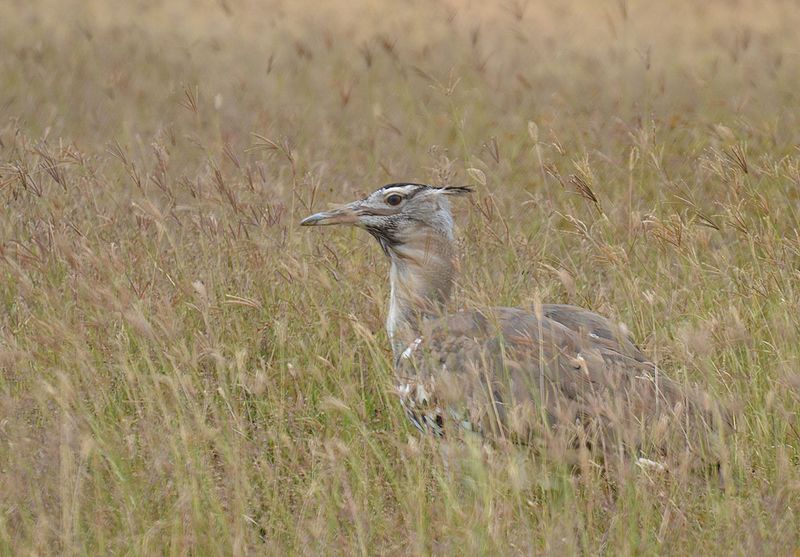
Bustards are large, terrestrial birds that inhabit dry grassland areas and the steppes of the Old World. They range from 40-150 cm in length and belong to the family Otididae.
Bustards have an omnivorous diet consisting of leaves, buds, seeds, fruit as well as small vertebrates and invertebrates.
These birds usually live a solitary life but can be seen gathering around water sources or food during certain times of year such as mating season.
Due to their large size they are vulnerable to predation by foxes or other animals which is why they tend to remain alert at all times.
When in open spaces while relying on camouflage for protection against predators when out in tall vegetation coverings.
Scientific classification:
| Kingdom | Animalia |
| Phylum | Chordata |
| Class | Aves |
| Clade | Otidimorphae |
| Order | Otidiformes Wagler, 1830 |
| Family | Otididae Rafinesque, 1815 |
13. Penduline Tits
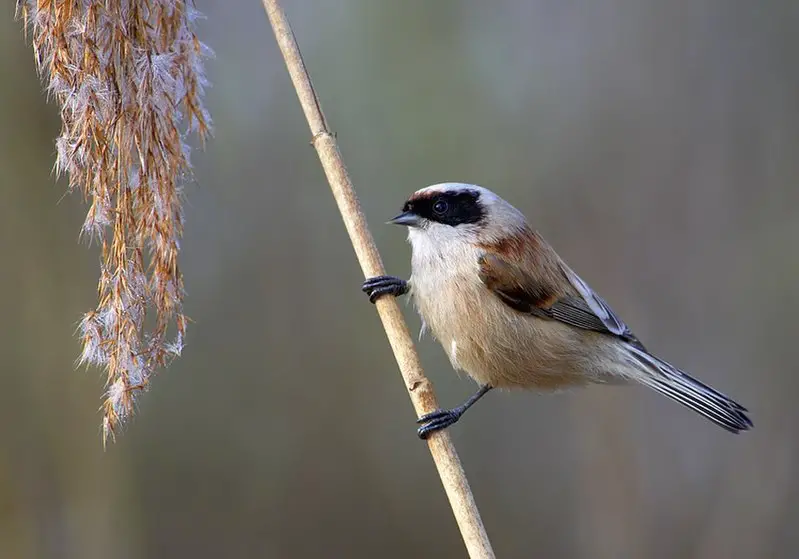
Penduline tits are small passerines with a length ranging from 7.5 to 11 cm, resembling true tits (Paridae). They have delicate bills with needle-like points and their wings appear short and rounded.
These birds build elaborate bag nests that hang from trees over water, giving them the name of “penduline” – meaning hanging. As for diet, they mainly feed on insects and spiders but may also consume some seeds too.
Depending on the species, penduline tits can be found in sub-Saharan Africa or across Eurasia into China and Central Asia as well as parts of North America such as California’s Sierra Nevada range halfway up Mexico’s western coast.
Scientific classification:
| Kingdom | Animalia |
| Phylum | Chordata |
| Class | Aves |
| Order | Passeriformes |
| Infraorder | Passerida |
| Family | Remizidae Olphe-Galliard, 1891 |
14. Treecreepers
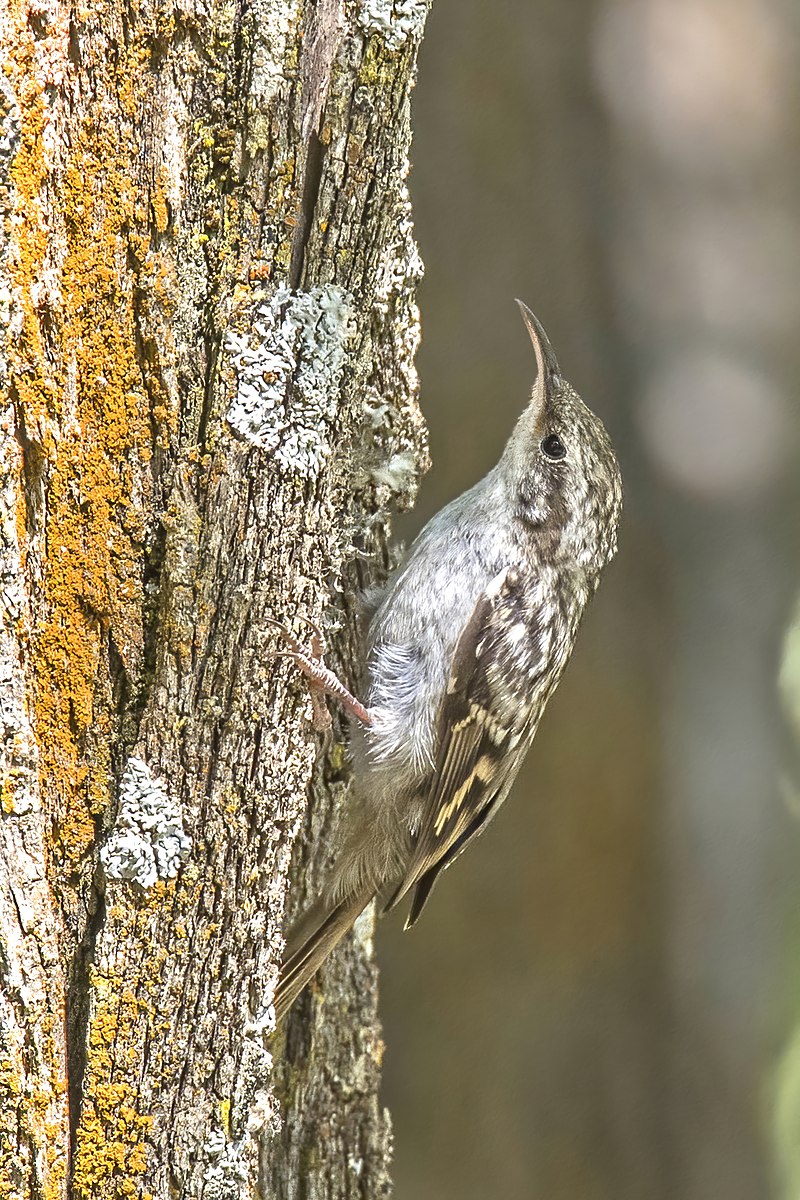
Treecreepers are small passerine birds found in wooded areas of the Northern Hemisphere and sub-Saharan Africa.
They have dull colored plumage, long curved bills, stiff tails and strong feet that help them to climb up tree trunks while searching for food such as insects and spiders.
The two genera Certhia and Salpornis include eleven species which can be identified by their distinct call – a high pitched ‘tsee-tsit’.
Treecreepers build cup shaped nests on trees usually near the base or middle trunk using mosses, lichens, grasses with leaves inside them to provide insulation from cold temperatures.
These birds also use bark crevices during winter months when they shelter in groups together against extreme weather conditions.
Scientific classification:
| Kingdom | Animalia |
| Phylum | Chordata |
| Class | Aves |
| Order | Passeriformes |
| Superfamily | Certhioidea |
| Family | Certhiidae Leach, 1820 |
15. Bearded Reedling
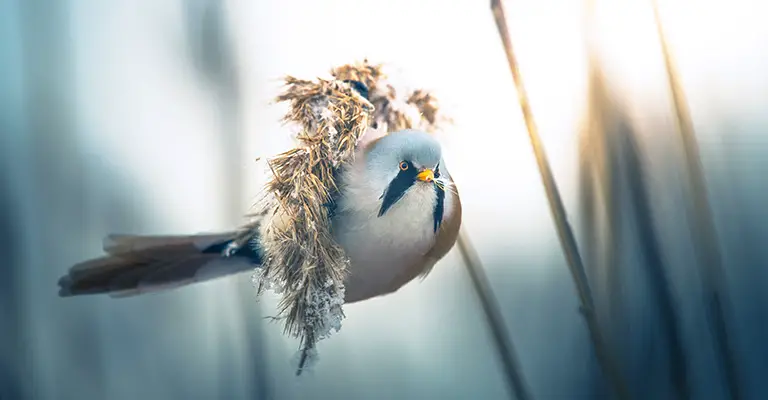
The Bearded Reedling is a small passerine bird found in reed-beds across Europe, Asia and North Africa.
It is easily identified by its distinct black and white plumage with males having yellow faces.
This species belongs to the only family of birds known as Panuridae and was first described by Carl Linnaeus back in 1758.
They feed on insects such as beetles, flies, moths among others but also consume seeds from plants like sedges or rushes during winter months when food availability decreases significantly.
These birds are territorial meaning that they have their own area where they live which can vary from 8 to 12 hectares depending on the seasonality of insect abundance within these areas making them an important part for maintaining healthy ecosystems in wetlands around their range.
Scientific classification:
| Kingdom | Animalia |
| Phylum | Chordata |
| Class | Aves |
| Order | Passeriformes |
| Family | Panuridae Des Murs, 1860 |
| Genus | Panurus Koch, 1816 |
| Species | P. biarmicus |
16. Eurasian Reed Warbler
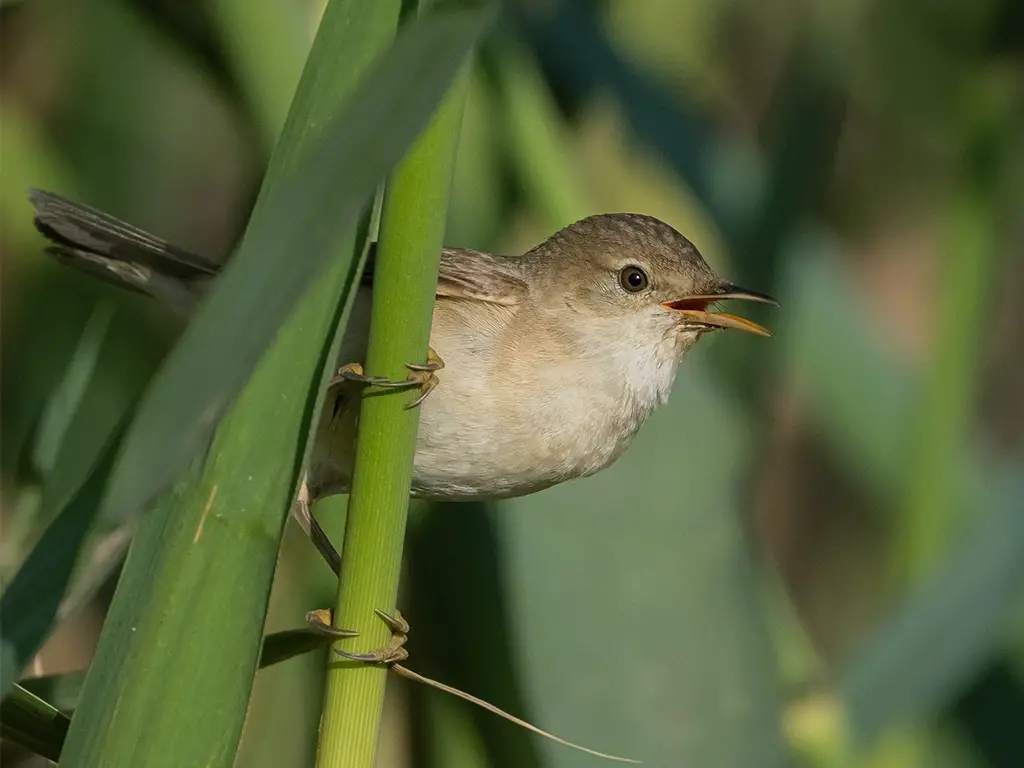
The Eurasian reed warbler (Acrocephalus scirpaceus) is a species of Old World Warbler native to the temperate parts of Europe and Asia.
It breeds in wetlands such as marshes, ponds and rivers with dense vegetation like reeds or tall grasses.
During its wintering season, it migrates southward to sub-Saharan Africa where there are milder conditions.
This small bird has streaked brown plumage on the upperparts and white underparts which makes it difficult for predators to spot among the foliage.
Its diet consists mainly of insects including aphids, caterpillars larvae and moths caught while flying over water or by gleaning from plants growing near water bodies.
The male sings an attractive song consisting of several phrases repeated one after another as part of their courtship display during breeding season in order attract females for mating purposes.
Scientific classification:
| Kingdom | Animalia |
| Phylum | Chordata |
| Class | Aves |
| Order | Passeriformes |
| Family | Acrocephalidae |
| Genus | Acrocephalus |
| Species | A. scirpaceus |
17. Eurasian Penduline Tit
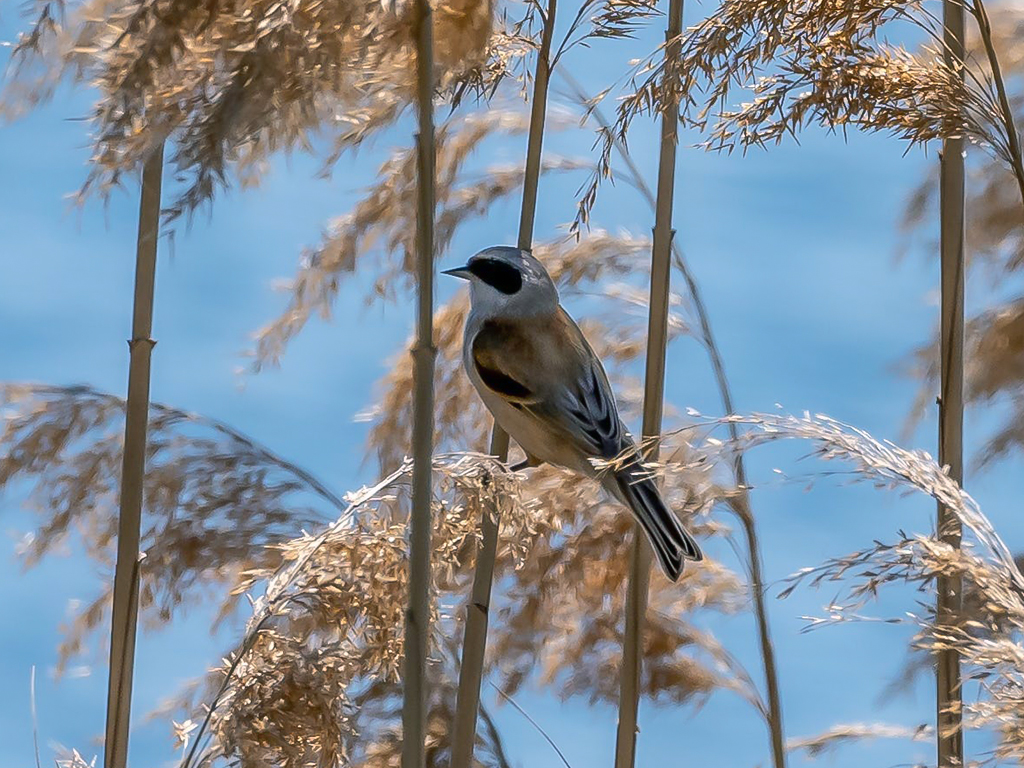
The Eurasian penduline tit is a passerine bird of the genus Remiz which can be found widely across the western Palearctic.
It migrates to more northern parts in summer, while staying resident in its southern range during winter months.
This species experienced an expansion of its breeding grounds throughout Western Europe between 1980s and 1990s, thus increasing its population significantly.
The Penduline Tit has various striking features like bright yellow underparts with black streaks on sides.
Greyish-brown upper part with white underside and pale eye line along head sides as well as distinctive tail nest made from fibers and mosses hanging from trees or shrubs like a pendulum hence their name ‘Penduline’.
These birds feed mainly on insects but also eat some seeds especially sunflower seeds making them popular garden visitors for many people.
Scientific classification:
| Kingdom | Animalia |
| Phylum | Chordata |
| Class | Aves |
| Order | Passeriformes |
| Family | Remizidae |
| Genus | Remiz |
| Species | R. pendulinus |
18. Old World Orioles
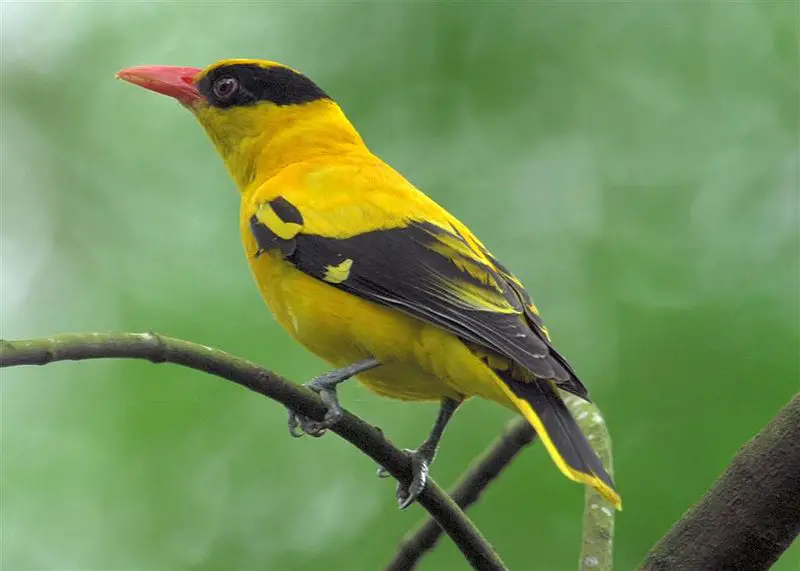
Old World orioles are a family of passerine birds found in the Old World. It comprises four genera: piopios, figbirds, pitohuis and the original genus Oriolus.
The African black-headed species have sometimes been removed from this latter group due to their distinct characteristics as well as other proposed splits for Oriolus.
These colorful birds can be identified by their bright yellow or orange plumage that often features darker markings on wings and head areas, although some species may also display a blue hue or stripes across the body feathers.
They typically feed on insects such as caterpillars and grasshoppers but will supplement with small fruits when available too – making them beneficial additions to gardens.
Scientific classification:
| Kingdom | Animalia |
| Phylum | Chordata |
| Class | Aves |
| Order | Passeriformes |
| Superfamily | Orioloidea |
| Family | Oriolidae Vigors, 1825 |
19. Hoopoes
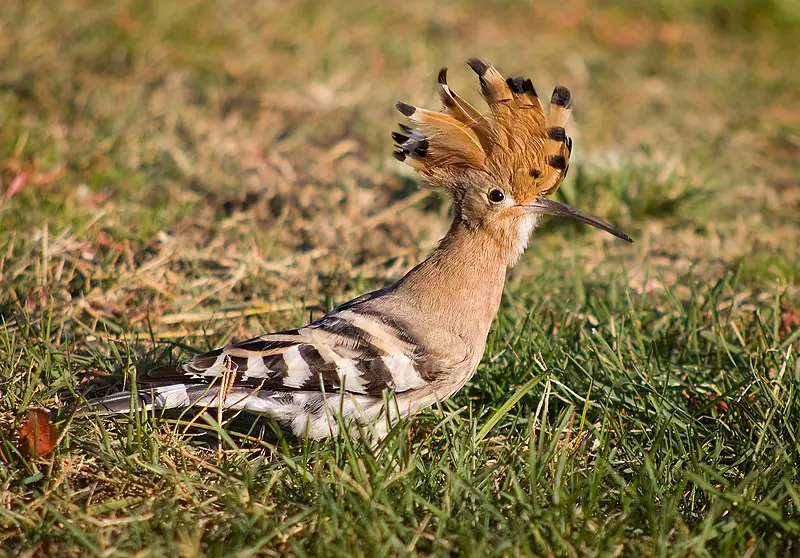
Hoopoes are a fascinating species of bird, found across Africa, Asia and Europe. They have beautiful plumage with unique ‘crowns’ of feathers on their heads.
Three living and one extinct species exist – although for some time they were all classed as the same species: Upupa epops. Some taxonomists still believe this to be true.
These birds are often associated with royalty due to the impressive crown-like crest atop their head, adding an extra element of mystery and exoticism to these creatures.
Hoopoes can also produce loud calls which sound like “hoo-poo” hence why they’ve been given such an apt name.
Scientific classification:
| Kingdom | Animalia |
| Phylum | Chordata |
| Class | Aves |
| Order | Bucerotiformes |
| Family | Upupidae Leach, 1820 |
| Genus | Upupa Linnaeus, 1758 |
20. Bee-Eater

Bee-eaters are one of the most beautiful and vibrant birds in existence. They have a slender body, long wings, down turned bills and their signature elongated central tail feathers which make them instantly recognizable from afar.
Their plumage is incredibly colorful with many shades ranging from blues to greens to reds that glisten when they fly through the air.
These stunning creatures can be found all over Africa, Asia, Southern Europe, Australia and New Guinea where they feed mainly on bees but also other insects like flies or wasps as well as small mammals such as lizards or rodents.
Bee-eaters live in colonies near rivers or wetlands so that they may easily hunt for food while staying close together for safety purposes.
Additionally it allows them to better display their impressive courtship dances during mating season.
Scientific classification:
| Kingdom | Animalia |
| Phylum | Chordata |
| Class | Aves |
| Order | Coraciiformes |
| Family | Meropidae Rafinesque, 1815 |
21. Plovers

Plovers are a family of around 64-68 species of ground-dwelling birds, commonly found in open country such as fields, meadows and tundras.
They have short bills with webbed feet to help them forage through mud or shallow water.
Plover plumage is usually mottled brown though some species may have brighter colors on the head and wings.
These birds feed mainly on insects but can also eat small crustaceans and worms.
Plovers breed during springtime when they dig holes in sandy or pebbled beaches to lay their eggs which hatch after about 3 weeks incubation period.
They use distraction display behaviour by pretending an injury to the predators away from their nests if needed for protecting their young ones.
Scientific classification:
| Kingdom | Animalia |
| Phylum | Chordata |
| Class | Aves |
| Order | Charadriiformes |
| Family | Charadriidae Leach, 1820 |
22. European Bee-Eater
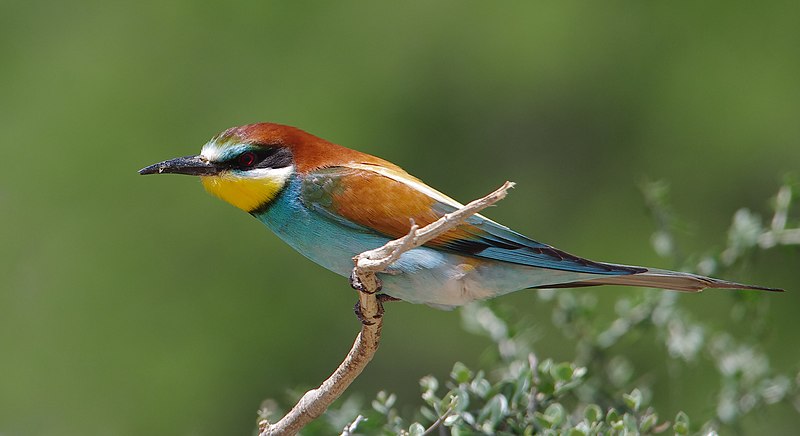
The European Bee-Eater is a stunningly beautiful bird, boasting an array of bright colors. Its head and neck are light blue with greenish ear coverts and its back is chestnut brown.
The wings have yellow primaries bordered in black, while the rest of the feathers contain hues of pink, russet orange, grayish-blue and olive green.
This species can be found breeding throughout Southern Europe to Central Asia as well as Northern Africa to South Africa where it likes to inhabit open country near rivers or streams with bare banks for nesting purposes.
It migrates during winter months down into tropical areas within both Africa and India but will occasionally overshoot northwards which may result in rare sightings elsewhere on occasion too.
Scientific classification:
| Kingdom | Animalia |
| Phylum | Chordata |
| Class | Aves |
| Order | Coraciiformes |
| Family | Meropidae |
| Genus | Merops |
| Species | M. apiaster |
23. Falcons And Caracaras
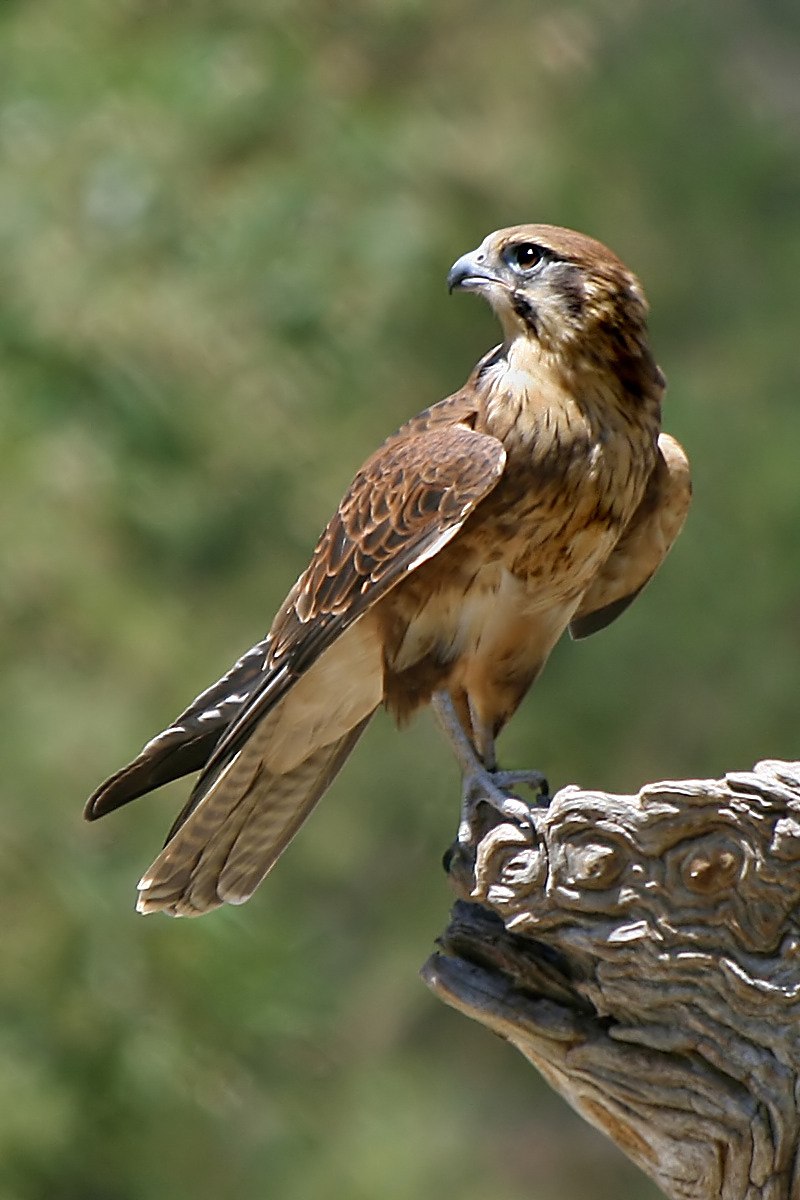
Falcons and caracaras are birds of prey that belong to the family Falconidae. They have impressive sharp talons, hooked beaks and keen eyesight which makes them excellent hunters.
Falcons can reach speeds up to 200 mph when diving for their prey while caracaras use a combination of running and flying to hunt small mammals such as rabbits or rats.
Both falcons and caracaras live in various areas around the world from grasslands, deserts, forests, wetlands or even urban areas where they nest on cliffs or tall buildings.
The diet mainly consists insects but also includes larger animals like reptiles or other birds which they catch by surprise with fast dives out of the sky.
Scientific classification:
| Kingdom | Animalia |
| Phylum | Chordata |
| Class | Aves |
| Order | Falconiformes |
| Family | Falconidae Leach, 1820 |
24. Skuas
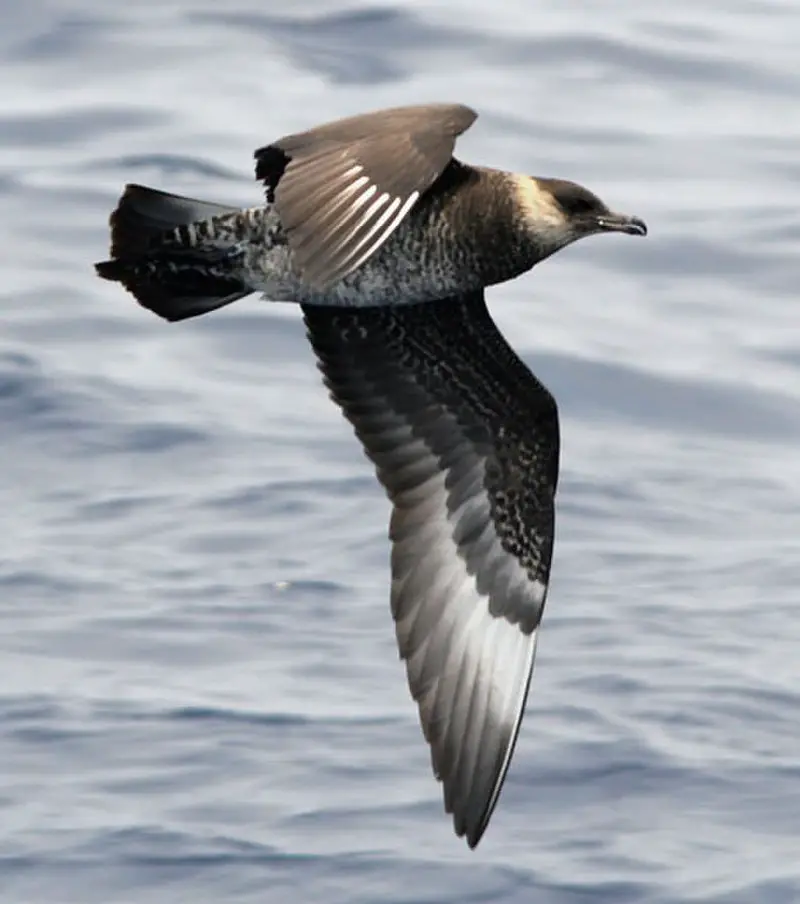
Skuas are a group of predatory seabirds with seven species, all belonging to the genus Stercorarius.
They are also known as “Jaegers” in North America and their name originates from the Faroese word for Great Skua – skúgvur.
These birds typically inhabit coastal areas or open oceans where they feed on fish, krill and other marine creatures.
Skuas can be distinguished by their pointed wings which help them fly long distances while hunting food.
Their distinctive colouration varies depending on age and habitat but generally includes greyish brown upperparts and white underparts with black streaks along its belly area.
The overall size ranges from 24-40 cm making these one of the larger sea bird species.
Scientific classification:
| Kingdom | Animalia |
| Phylum | Chordata |
| Class | Aves |
| Order | Charadriiformes |
| Suborder | Lari |
| Family | Stercorariidae Gray, 1871 |
| Genus | Stercorarius Brisson, 1760 |
25. Bonelli’s Eagle
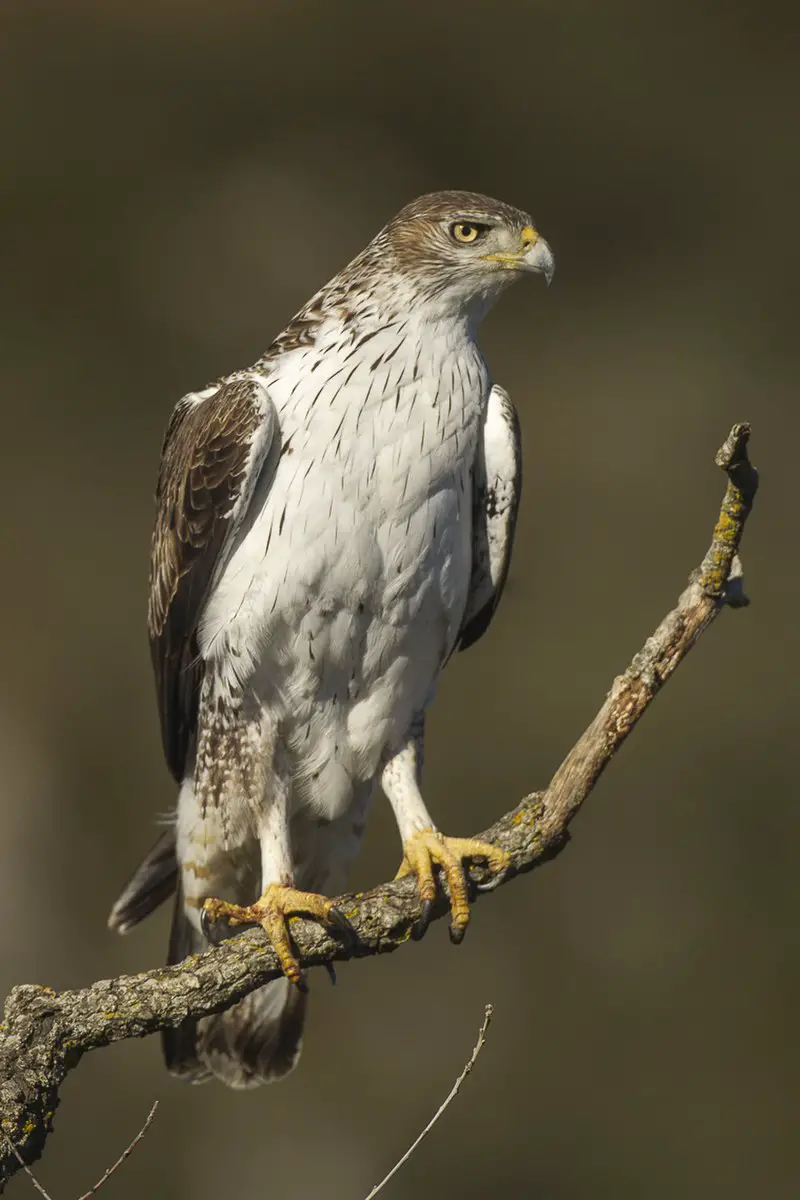
Bonelli’s eagle is a majestic bird of prey, named after the Italian ornithologist and collector Franco Andrea Bonelli. It can be found in parts of Europe, Africa and Asia where it inhabits wooded hillsides or open mountain ranges.
The species has an impressive wingspan that reaches up to 6 feet across. They use their sharp talons to catch small animals such as lizards and rabbits which they hunt from high above the ground.
With its distinctive crestless head, streaked chestnut feathers on its back and white underparts this stunning raptor makes for quite a sight when soaring through the sky.
Scientific classification:
| Kingdom | Animalia |
| Phylum | Chordata |
| Class | Aves |
| Order | Accipitriformes |
| Family | Accipitridae |
| Genus | Aquila |
| Species | A. fasciata |
26. Chukar
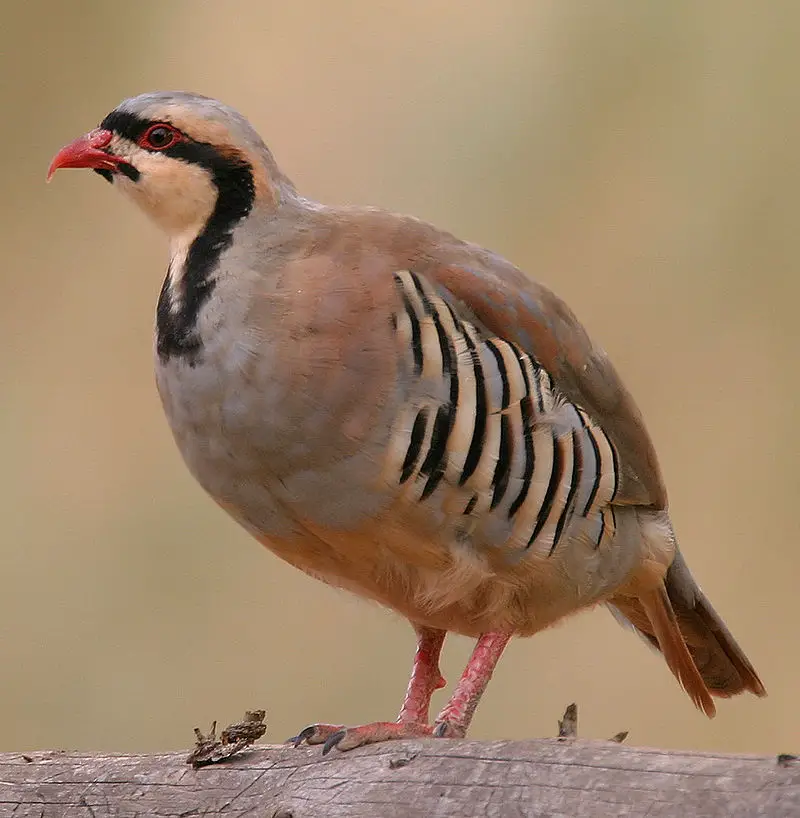
Chukar is a Palearctic upland gamebird belonging to the pheasant family. It has distinctive black and white bars on its flanks, as well as brown upperparts and buff underparts.
Its head is grey with an off-white face, throat and crest which turns chestnut in males during breeding season.
The Chukar typically lives in dry regions like open terrain or semi arid hillsides where it feeds mainly on seeds and invertebrates.
During winter months they tend to inhabit more wooded areas looking for shelter from harsh winds or snow storms.
They are social birds living in groups of up to 20 individuals but will pair off when mating season arrives.
Scientific classification:
| Kingdom | Animalia |
| Phylum | Chordata |
| Class | Aves |
| Order | Galliformes |
| Family | Phasianidae |
| Genus | Alectoris |
| Species | A. chukar |
27. Spur-Winged Lapwing

The Spur-winged Lapwing is a species of wader found in the family Charadriidae.
It breeds around the eastern Mediterranean and Africa, where it inhabits savannahs, wetlands and grasslands.
Its plumage is mainly black with white wing stripes and yellow legs.
This bird has an impressive crest on its head that gives it a distinctive look amongst other lapwings.
The most interesting feature of this bird though is the spurs on its wings which are believed to be part of an unattested cleaning symbiosis between them and Nile crocodiles.
It feeds mostly on insects, larvae, worms as well as some plant material such as seeds or fruits.
Overall these birds can live up to 15 years in their natural habitat making them one of longest lived among all wading species.
Scientific classification:
| Kingdom | Animalia |
| Phylum | Chordata |
| Class | Aves |
| Order | Charadriiformes |
| Family | Charadriidae |
| Genus | Vanellus |
| Species | V. spinosus |
28. Pelicans

Pelicans are a family of birds within the pelecani order, with two genera: Eopelecanus (extinct) and Pelecanus (still existing). They have been around since the late Eocene period — over 40 million years ago.
Pelicans are large waterbirds that can be found in both temperate and tropical regions all over the world.
Their most distinctive feature is their enormous pouched bills; they use these to scoop up fish from rivers or lakes as part of their diet.
These majestic creatures come in various colors, including white, grey, black and browns. When flying in formation they look like an arrow pointing towards its destination.
Pelicans usually live near bodies of water but may also migrate long distances when food resources become scarce during winter months.
Scientific classification:
| Kingdom | Animalia |
| Phylum | Chordata |
| Class | Aves |
| Order | Pelecaniformes |
| Family | Pelecanidae Rafinesque, 1815 |
29. Hypocoliidae
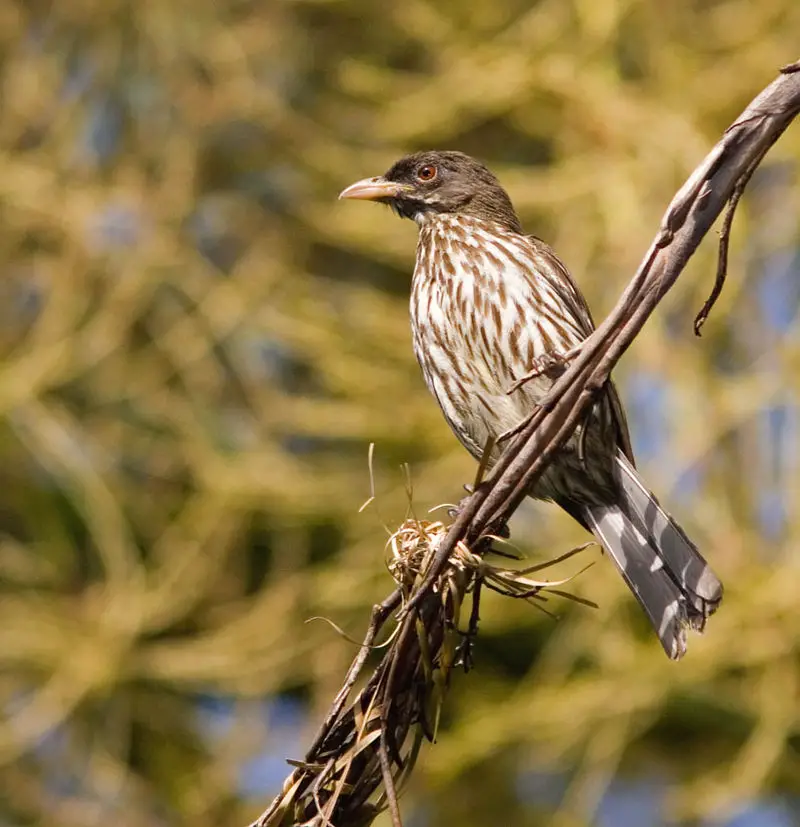
The Waxwing is a small passerine bird known for its wax-like wing feathers. They have pale gray bodies with bright red waxy tips on their wings and tail feathers.
Their heads are crested, which makes them easily recognizable in flight. These birds live primarily in the Northern Hemisphere, ranging from North America to Scandinavia and Siberia during winter months before migrating southward in late summer or early fall.
During migration they can be found around riparian areas as well as urban parks and gardens where food sources such as berries are plentiful.
Waxwings feed mainly on fruits like rowanberries, cedar apples and hawthorn berries but will also take insects when available.
As sociable species these birds often flock together forming large groups of up to hundreds of individuals at times.
30. Ducks
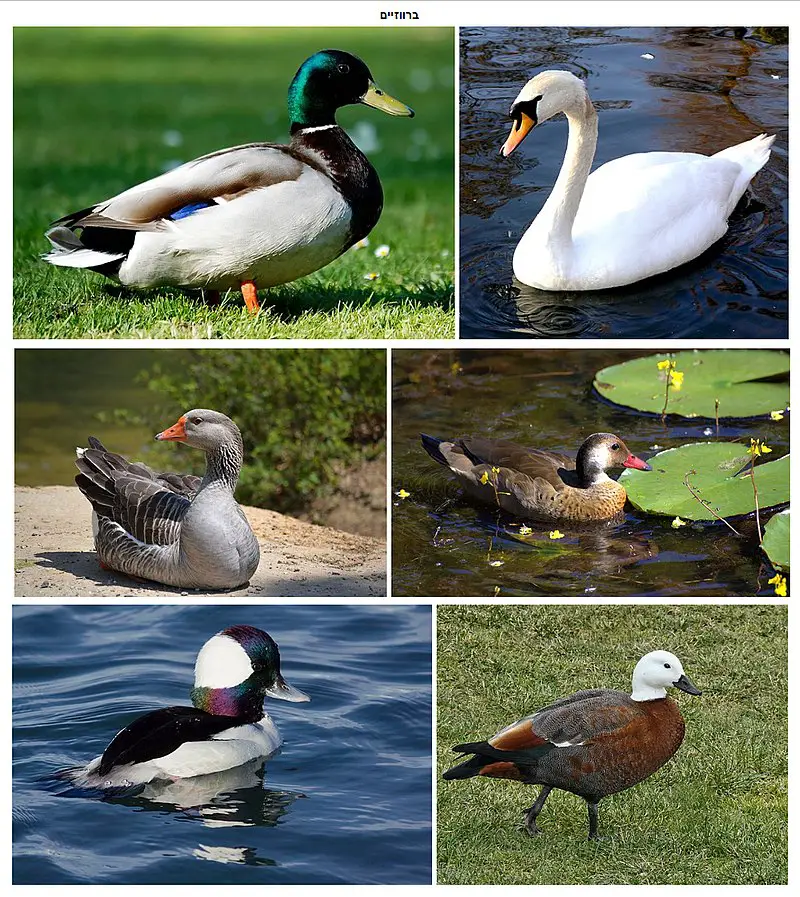
Ducks are water birds belonging to the family of Anatidae. They have a worldwide distribution except Antarctica and are highly adapted for swimming, floating on water surface or in shallow depths.
Ducks come in various sizes ranging from small teals to large swans with around 174 species found across 43 genera.
Their feathers make them waterproof enabling ducks to stay afloat even in stormy waters while their webbed feet allow them to swim gracefully underwater.
Ducks usually feed by filtering food items such as insects, molluscs and crustaceans through their bills but some also graze on land vegetation like grasses & grains depending upon availability of resources at different locations they inhabit.
Scientific classification:
| Kingdom | Animalia |
| Phylum | Chordata |
| Class | Aves |
| Order | Anseriformes |
| Suborder | Anseres |
| Superfamily | Anatoidea |
| Family | Anatidae Leach, 1820 |
31. Stone-Curlew

Stone-curlews, also known as dikkops or thick-knees, are a family of birds that have adapted to live in tropical and temperate regions throughout the world.
They can be found in Africa, Asia and Australia with two or more species per region. Despite being classified as waders, most prefer dry arid habitats over moist wetlands.
Stone-curlews typically have long legs which help them navigate through their preferred terrain efficiently; some species even stand at an impressive height when standing on those long legs.
Additionally they feature cryptic plumage which helps them blend into their surroundings while hunting for prey such as insects and small mammals like rodents.
These unique bird’s calls are easily recognizable; it has been said that hearing one is similar to listening to someone whistling ‘Keee Weee’.
Scientific classification:
| Kingdom | Animalia |
| Phylum | Chordata |
| Class | Aves |
| Order | Charadriiformes |
| Suborder | Chionidi |
| Family | Burhinidae Mathews, 1912 |
32. Threskiornithidae
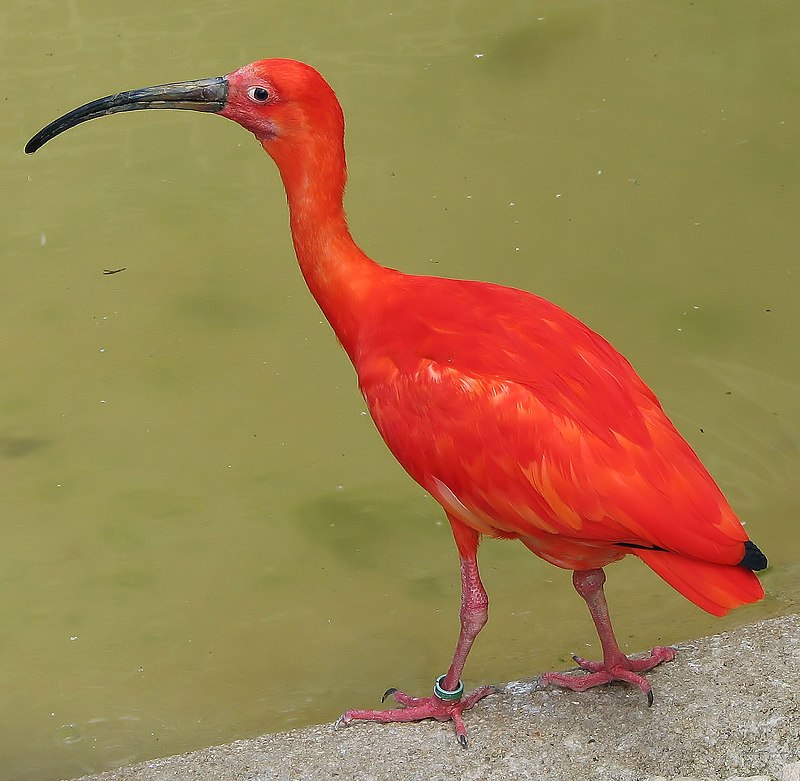
Threskiornithidae is a family of large wading birds which includes 36 species. These birds are traditionally divided into two subfamilies – the ibises and the spoonbills.
However, recent genetic analysis has shown that spoonbills actually belong to Old World ibis group, while New World ibises form an early offshoot from this lineage.
Threskiornithidse members have long curved beaks with serrated edges used for catching fish in shallow water or mudflats, as well as other aquatic invertebrates like crustaceans and mollusks.
They also feed on plant matter such as grains and seeds found close to wetlands areas where they live.
This diverse diet makes them important scavengers in their ecosystems, helping maintain healthy populations of native wildlife by controlling insect numbers and dispersing energy-rich seeds throughout wetland habitats.
Scientific classification:
| Kingdom | Animalia |
| Phylum | Chordata |
| Class | Aves |
| Order | Pelecaniformes |
| Suborder | Ardei |
| Family | Threskiornithidae Richmond, 1917 |
33. Phasianidae
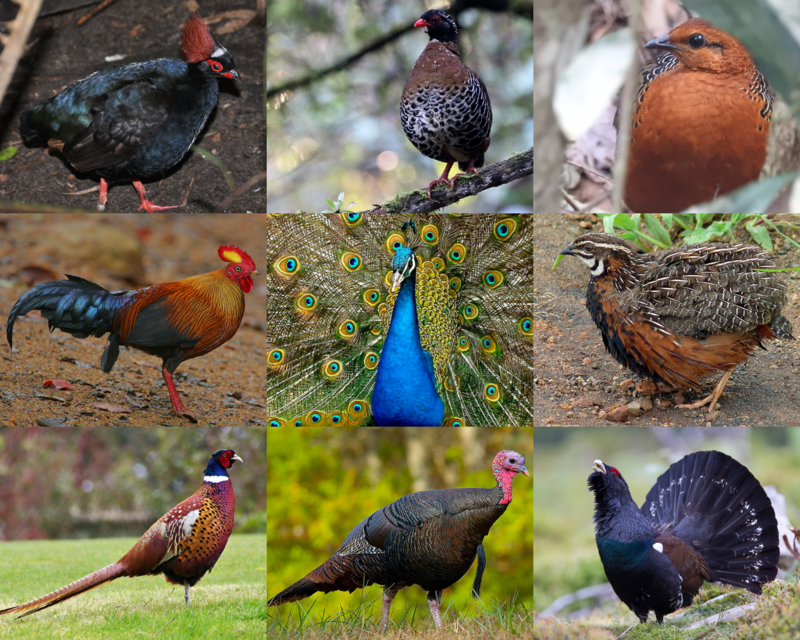
The Phasianidae family of birds is one that contains many popular gamebirds, with a total of 185 species divided across 54 genera.
These heavy ground-living birds include pheasants, partridges, junglefowl, chickens, and turkeys among others like Old World quail and peafowl.
This large family was formerly split into two subfamilies known as the Phasianinae and Perdicinae but this classification has since been changed to reflect more current scientific findings on them.
All these different types of birds have certain things in common such as their strong legs for scratching through leaves or soil looking for food items including insects, seeds, and other vegetation which makes up most of their diet.
They also all tend to be quite colorful in order to attract mates during breeding season when males will often display vibrant feathers or do dances around females in an attempt at courtship ritual displays.
The majority are monogamous creatures too although some may form short-term pair bonds before going off alone again once mating has taken place – either way.
There tends to be very little parental care given by adults after eggs have hatched so chicks need to fend for themselves right away.
Scientific classification:
| Kingdom | Animalia |
| Phylum | Chordata |
| Class | Aves |
| Order | Galliformes |
| Superfamily | Phasianoidea |
| Family | Phasianidae Horsfield, 1821 |
34. Oystercatchers
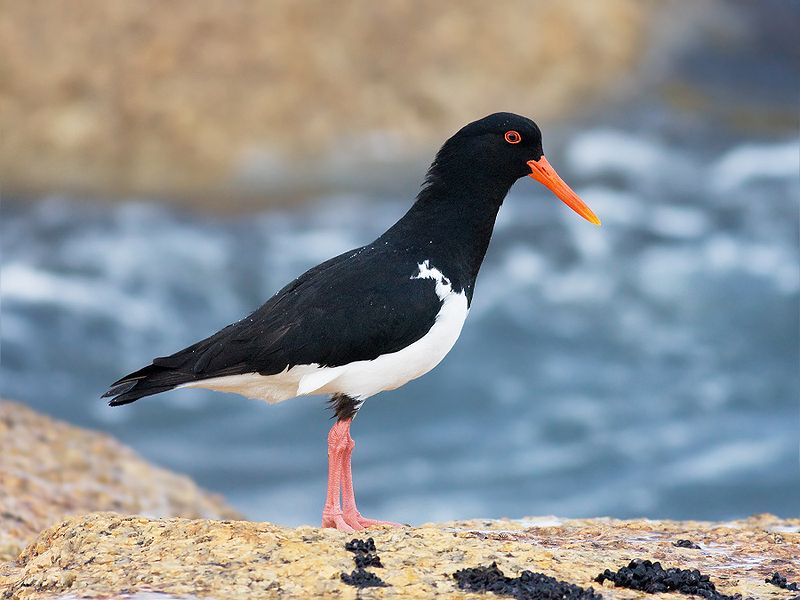
Oystercatchers are a family of waders forming the Haematopodidae, with one genus; Haematopus.
They live in coastal regions around the world excluding both polar and some tropical areas of Africa & South East Asia.
Eurasian, South Island & Magellanic oystercatcher species also breed far inland – breeding grounds being found much deeper than other members of the family.
They have long beaks used to feed on molluscs such as mussels, clams and oysters which they crack open using their strong bills.
Oystercatchers are usually quite vocal birds making various loud calls when disturbed or alarmed.
The males tend to display more brightly coloured plumage compared to females who share similar brown/black hues for camouflage purposes during nesting season.
Scientific classification:
| Kingdom | Animalia |
| Phylum | Chordata |
| Class | Aves |
| Order | Charadriiformes |
| Suborder | Charadrii |
| Family | Haematopodidae Bonaparte, 1838 |
| Genus | Haematopus Linnaeus, 1758 |
35. Northern Storm Petrels
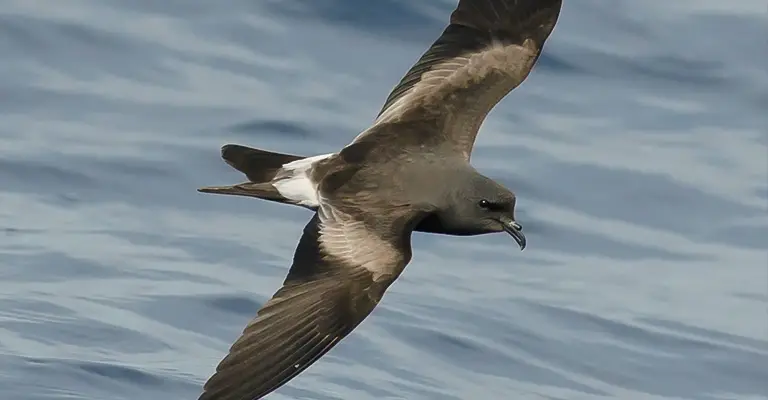
Northern storm petrels are one of the smallest seabirds, inhabiting oceans all over the world.
They have a unique ability to hover over water and pick planktonic crustaceans and small fish from the surface.
Northern storm petrels belong to the genus Hydrobates in family Hydrobatidae, part of Procellariiformes order.
This species was once lumped with austral storm petrel but recent studies show that they weren’t related closely which led them being split into two distinct species now.
These birds can be identified by their dark grey upperparts and wings along with white underparts when seen from afar while feeding on ocean’s surface.
Scientific classification:
| Kingdom | Animalia |
| Phylum | Chordata |
| Class | Aves |
| Order | Procellariiformes |
| Family | Hydrobatidae Mathews, 1912 |
| Genus | Hydrobates F. Boie, 1822 |
36. Procellariidae
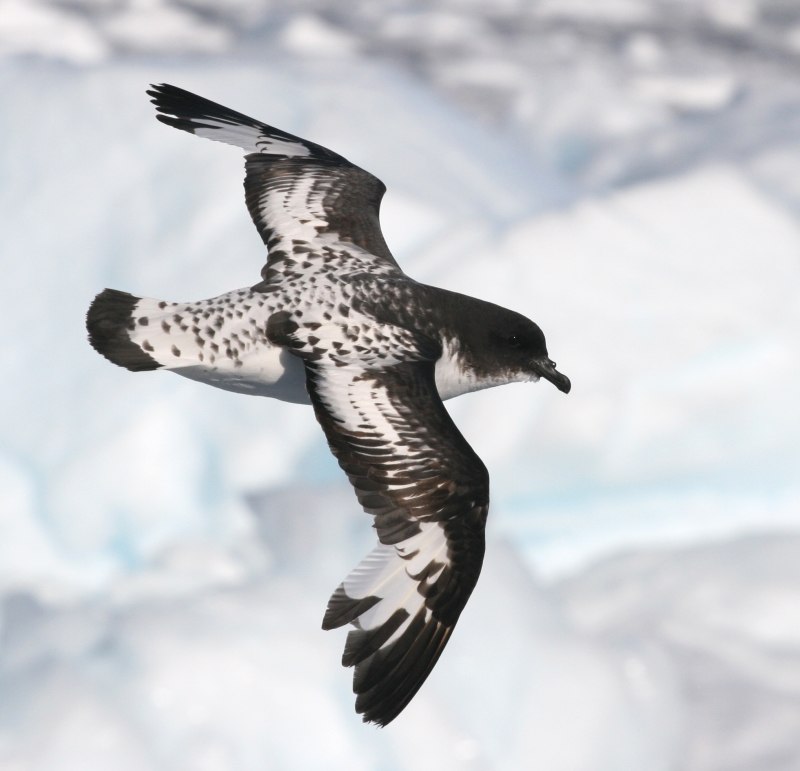
Procellariidae is a diverse family of seabirds belonging to the bird order Procellariiformes.
These birds are commonly referred to as tubenoses and include fulmarine petrels, gadfly petrels, diving petrels, prions, and shearwaters.
They range in size from the small storm-petrel which measures around 18cm long to the giant albatross which can reach up to 3 meters in length.
Generally found near oceans or coasts where they feed on fish as well as squid and other marine life depending on species.
Many procellariids will also nest inland during breeding season before returning back out at sea for most of their lives.
Their wings have specially adapted feathers that give them incredible gliding abilities allowing them literally fly with minimal effort over vast distances across oceanic regions.
Scientific classification:
| Kingdom | Animalia |
| Phylum | Chordata |
| Class | Aves |
| Order | Procellariiformes |
| Family | Procellariidae Leach, 1820 |
37. Stilts And Avocets
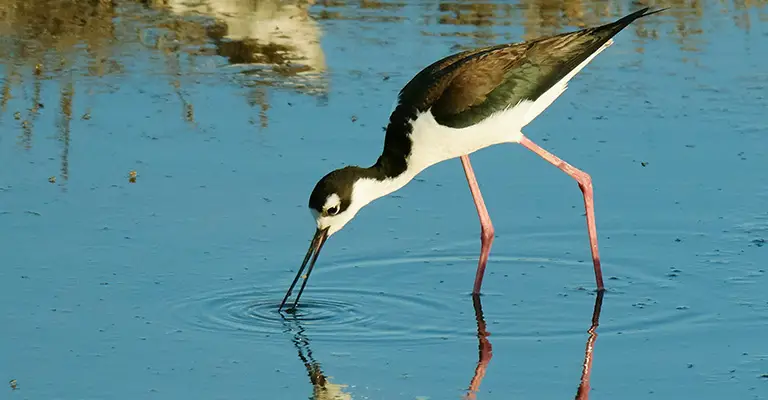
Stilts and avocets are two distinct groups of birds belonging to the family Recurvirostridae. They range in length from 30-46 cm (12-18 inches) and weigh between 140 – 435 g (4.9 – 15.3 ounces).
Males usually have slightly larger bodies than females, with long thin legs, necks and bills.
Avocet bills curve upwards uniquely while stilt beaks remain straight most times.
These wading birds live mainly near shorelines or wetlands where they feed on aquatic invertebrates like brine shrimp, insects etc., occasionally supplementing their diet with seeds or small fish too.
Stilts also inhabit open fields in search of food sources such as earthworms or grasshoppers during the non-breeding season.
Both groups migrate over large distances for warmer weathers when it gets cold outside.
Scientific classification:
| Kingdom | Animalia |
| Phylum | Chordata |
| Class | Aves |
| Order | Charadriiformes |
| Suborder | Charadrii |
| Family | Recurvirostridae Bonaparte, 1854 |
38. Glareolidae
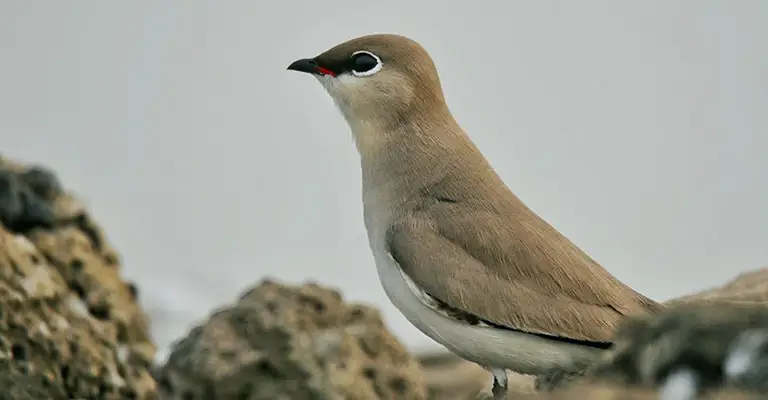
Glareolidae is a family of wading birds, consisting of four genera and 17 species. They are distinguished from other charadrii by their long bills which have a slight downward curve.
Glareolidae live around open grasslands and deserts, where they hunt for insects using the bill to probe into soil or vegetation.
Most species are found in Africa but two pratincoles inhabit parts of Europe and Asia as well.
Coursers tend to be larger than pratincoles with longer legs allowing them to run quickly across sandy dunes while feeding on small animals like lizards or spiders.
Pratincoles feed mainly on flying insects, snatching them out of midair with great agility during flight.
All glareolids share unique features such as large eyes that help it spot prey at night easily making this group one interesting bird family.
Scientific classification:
| Kingdom | Animalia |
| Phylum | Chordata |
| Class | Aves |
| Order | Charadriiformes |
| Suborder | Lari |
| Family | Glareolidae CL Brehm, 1831 |
39. Cisticolidae
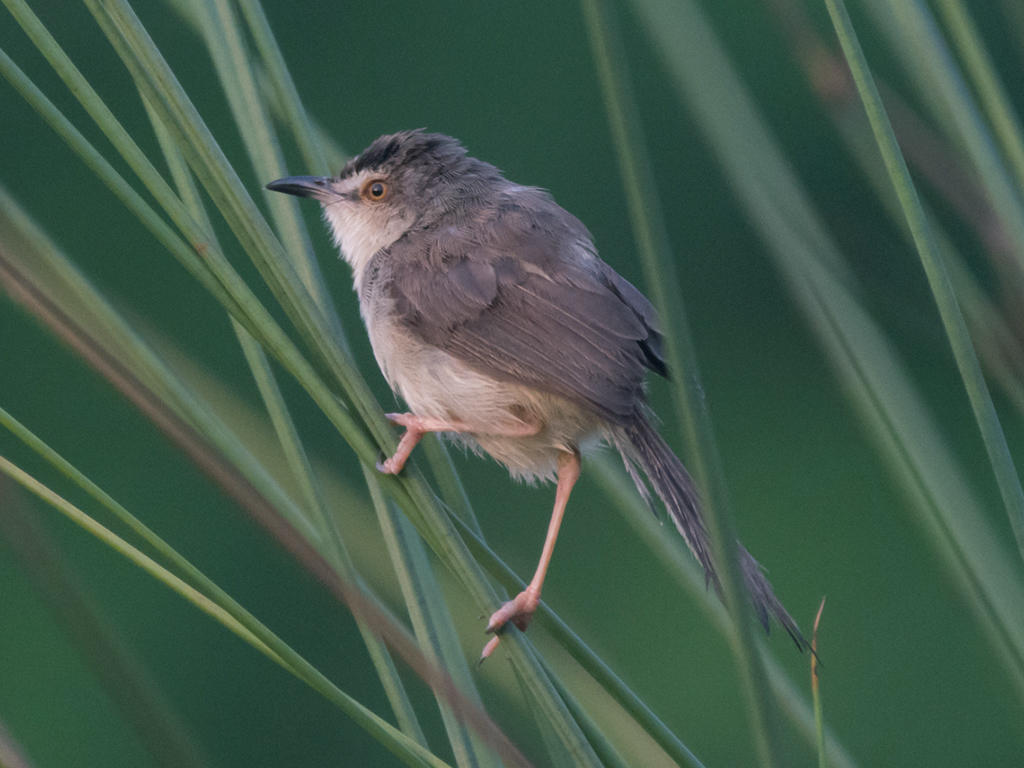
Cisticolidae is a family of warblers found mainly in warmer regions of the Old World. There are about 160 species all together, mostly seen across Africa but also in other parts like tropical Asia and Australasia.
One notable example from this family is the zitt bird which makes its home across these areas.
These small passerine birds have drab colors on their bodies with darker wings and tails for camouflage when they fly or perch among foliage.
They can be distinguished by their loud chirps that echo through forests and grasslands as well as distinctive songs used to attract mates during mating seasons.
Despite being quite common, Cisticolidae remain elusive due to their excellent ability to hide away within vegetation making them difficult to observe closely in nature.
Scientific classification:
| Kingdom | Animalia |
| Phylum | Chordata |
| Class | Aves |
| Order | Passeriformes |
| Superfamily | Sylvioidea |
| Family | Cisticolidae Sundevall, 1872 |
40. Acrocephalidae
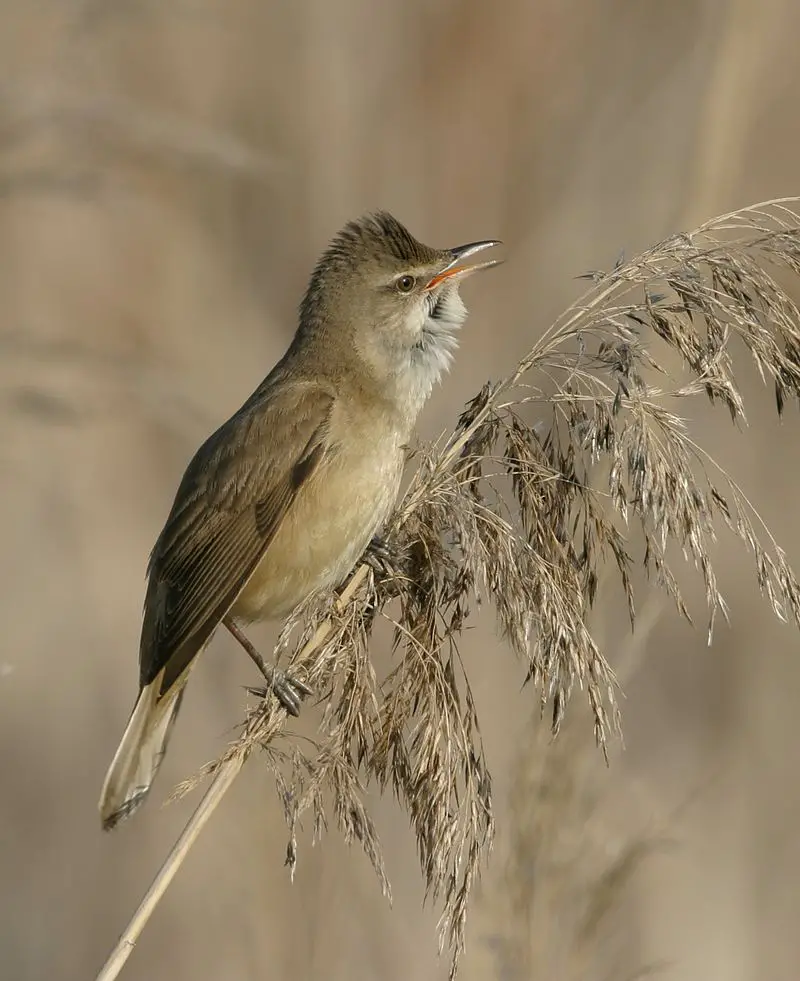
The Acrocephalidae, commonly known as reed warblers, marsh- and tree-warblers or acrocephalid warblers are a family of passerine birds belonging to the superfamily Sylvioidea.
These birds typically have an olivaceous brown top with yellowish to beige underside. They can mostly be spotted in open woodlands, reed beds or tall grasses.
This family comprises about 130 species spread across Eurasia and Africa which includes some vagrant species too.
Most of these bird families feed on insects like spiders, beetles etc., while others also consume small fruits such as berries.
They make nests close to ground level by weaving twigs together using their saliva for binding them making it waterproof enough so that eggs stay safe from rainwater during breeding season.
Scientific classification:
| Kingdom | Animalia |
| Phylum | Chordata |
| Class | Aves |
| Order | Passeriformes |
| Superfamily | Sylvioidea |
| Family | Acrocephalidae Salvin, 1882 |
41. Streaked Scrub Warbler
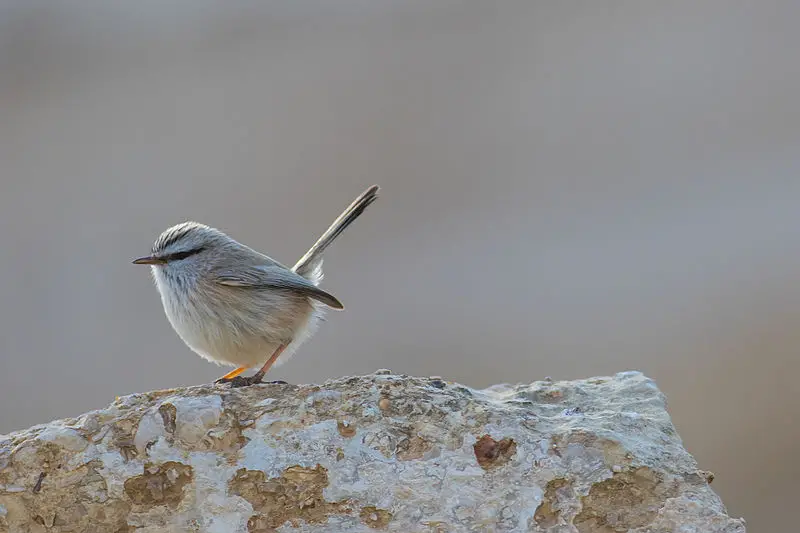
The Streaked Scrub Warbler is a small passerine bird, found in northern Africa and southwestern Asia.
It frequents scrubby areas, ravines and gorges near deserts, remaining mainly resident but with possible local movements outside the breeding season.
This species has grayish-brown upperparts streaked with black lines or bars forming an intricate pattern across its back; whitish underparts are also marked by dark streaks on the breast.
Its diet consists of insects which it catches from low vegetation while making short flights over them to capture prey as well as gleaned items from branches or foliage surface foraged on foot.
The Streak Scrub Warbler is quite vocal throughout the year giving various trills and whistles that sound like “seet”.
Scientific classification:
| Kingdom | Animalia |
| Phylum | Chordata |
| Class | Aves |
| Order | Passeriformes |
| Family | Scotocercidae Fregin, Haase, Olsson, & Alström, 2012 |
| Genus | Scotocerca Sundevall, 1872 |
| Species | S. inquieta |
42. Phylloscopidae
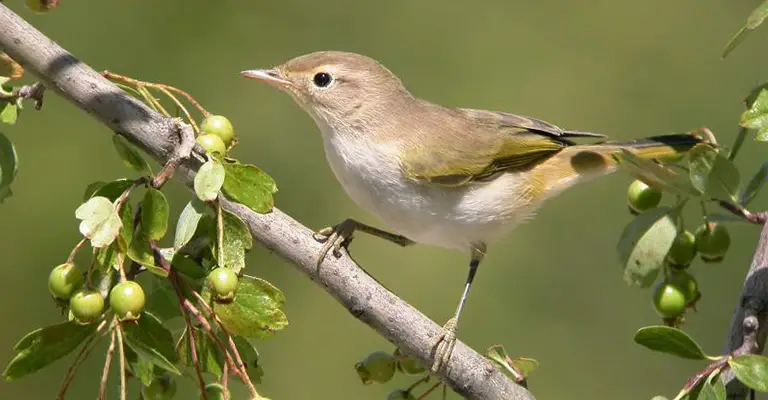
The Waxwing is a small passerine bird known for its wax-like wing feathers. They have pale gray bodies with bright red waxy tips on their wings and tail feathers.
Their heads are crested, which makes them easily recognizable in flight. These birds live primarily in the Northern Hemisphere, ranging from North America to Scandinavia and Siberia during winter months before migrating southward in late summer or early fall.
During migration they can be found around riparian areas as well as urban parks and gardens where food sources such as berries are plentiful.
Waxwings feed mainly on fruits like rowanberries, cedar apples and hawthorn berries but will also take insects when available.
As sociable species these birds often flock together forming large groups of up to hundreds of individuals at times.
43. Locustellidae
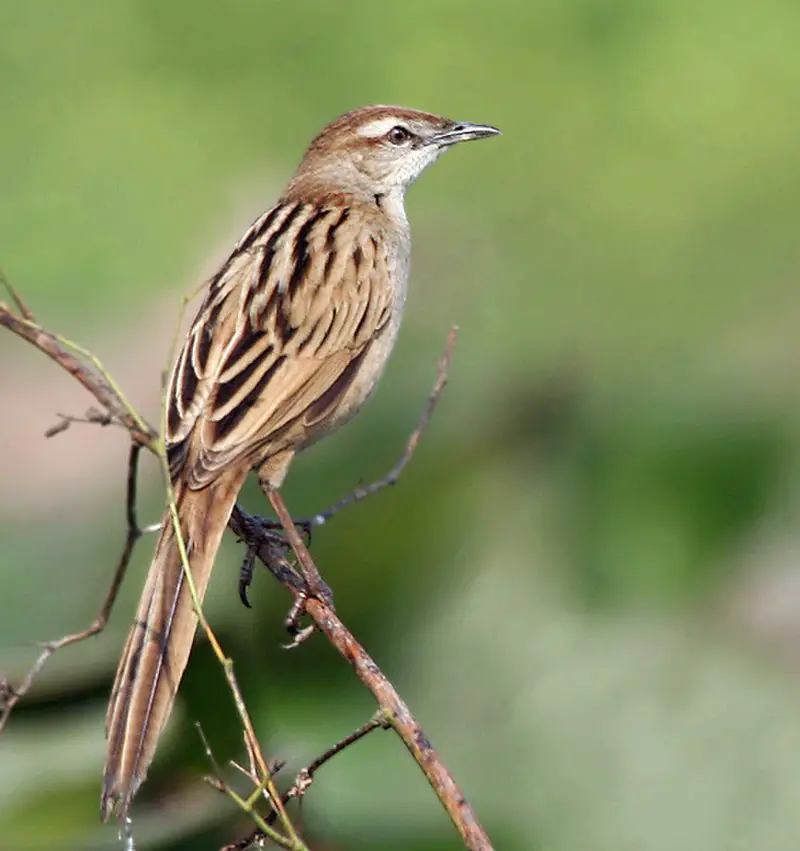
Locustellidae is a family of small insectivorous songbirds, commonly known as warblers. They are found mainly in Eurasia, Africa and the Australian region.
These birds typically have plain coloring on their wings and tail but with brightly colored patches on their face or neck.
Their diet consists mostly of insects and other invertebrates which they capture while foraging among grasses or bushes.
Locustellidae species also possess a distinctive vocalization that can be heard at dawn or dusk; it has been described as an intermittent trill lasting several seconds to minutes in length without any pauses between notes.
As active little birds, they make excellent additions to gardens providing hours of delight with their singing abilities.
Scientific classification:
| Kingdom | Animalia |
| Phylum | Chordata |
| Class | Aves |
| Order | Passeriformes |
| Superfamily | Sylvioidea |
| Family | Locustellidae Bonaparte, 1854 |
44. Barn-Owls
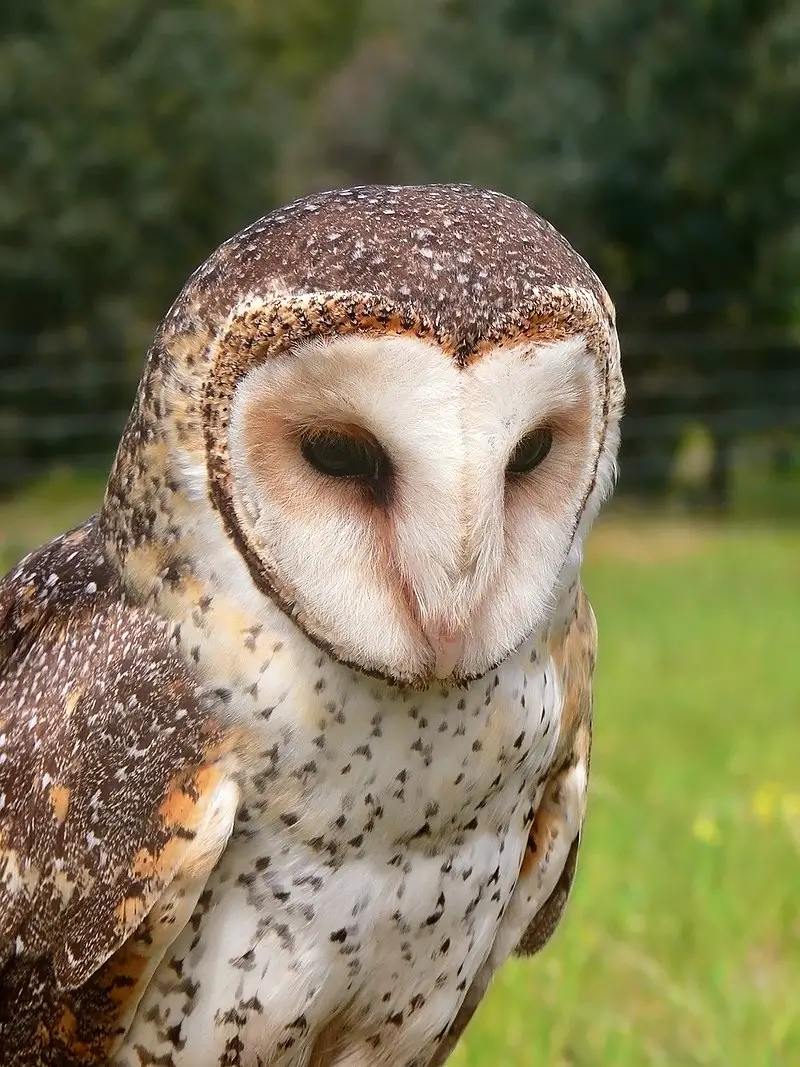
Barn-owls belong to the family Tytonidae and are distinguishable from other owls by their large heads, heart-shaped faces and long legs with powerful talons.
They inhabit a wide range of habitats, including grasslands, deserts, forests and wetlands.
These nocturnal birds hunt mainly small mammals like voles but also consume insects such as beetles or moths when available.
Barn-owls have excellent vision at night which helps them locate prey in even the darkest of conditions.
Their unique call is often heard during dusk or dawn which has earned them nicknames such as “screech owl” or “ghost owl”.
As they help control rodent populations they can be beneficial for farmers who may find barn-owls nesting on their property.
Scientific classification:
| Kingdom | Animalia |
| Phylum | Chordata |
| Class | Aves |
| Order | Strigiformes |
| Family | Tytonidae Ridgway, 1914 |
45. Glossy Ibis
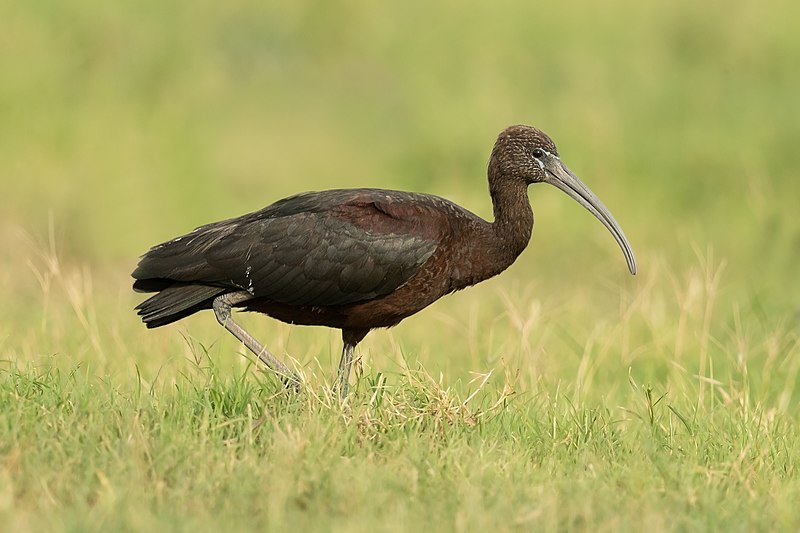
The Glossy Ibis is a water bird that belongs to the family Threskiornithidae. It has an unique bill in the shape of a sickle, which gave it its scientific name – Plegadis falcinellus.
It can be found widely across Europe, Asia and Africa, with scattered nesting sites in warm regions.
Its feathers are black-brown on top and chestnut brown from below; their wings have glossy greenish-purple sheen when seen from afar.
They mainly feed on small insects like grasshoppers, spiders or earthworms as well as crustaceans or amphibians caught while wading through shallow waters.
During breeding season they also consume plant material such as rice grains or corn kernels provided by humans near habitat areas where they nest.
Scientific classification:
| Kingdom | Animalia |
| Phylum | Chordata |
| Class | Aves |
| Order | Pelecaniformes |
| Family | Threskiornithidae |
| Genus | Plegadis |
| Species | P. falcinellus |
46. Cretzschmar’s Bunting
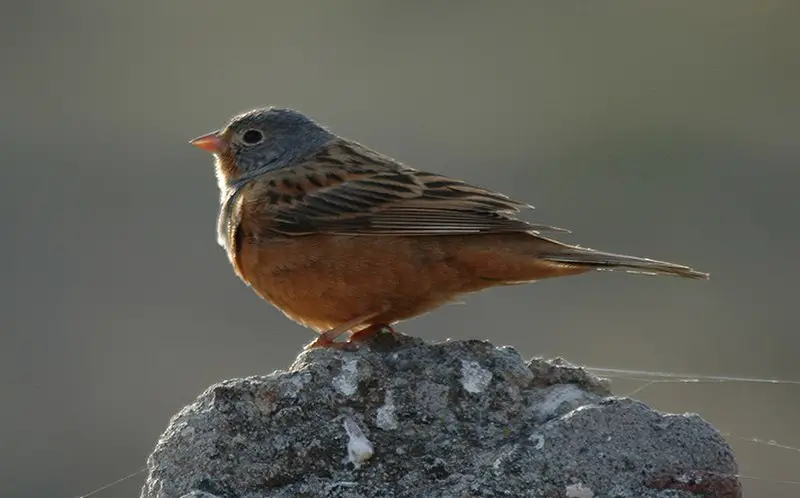
Cretzschmar’s bunting is a beautiful bird belonging to the Emberizidae family. It breeds in Greece, Turkey, Cyprus and Levant during summer months before migrating southwards towards Sudan and northern Eritrea for winter.
Its habitat comprises of sunny open hillsides with some bushes which provide it with food as well as shelter from predators.
The male Cretzschmar’s Bunting has an attractive black head while its upperparts are blue-grey in colour; hence making it easily distinguishable among other birds.
Although very rare, this species may sometimes be seen wandering around western Europe too.
Scientific classification:
| Kingdom | Animalia |
| Phylum | Chordata |
| Class | Aves |
| Order | Passeriformes |
| Family | Emberizidae |
| Genus | Emberiza |
| Species | E. caesia |
Also Featured In: Common Algerian Birds , Common Birds of Lesbos Island
47. Masked Shrike
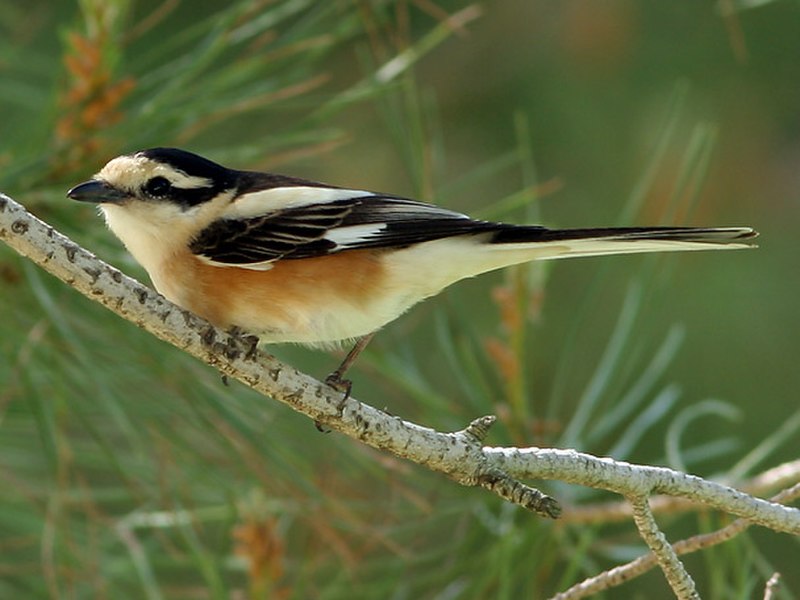
The Masked Shrike is a species of bird in the shrike family, found in southeastern Europe and the eastern Mediterranean. It breeds both in Iraq and Iran, before migrating to northeast Africa for winter.
This short-distance migrant can be seen as far away as northern and western Europe on occasions too.
The Masked Shrike sports an attractive black mask across its eyes with red patches near its bill. Its wings are greyish brown while it’s back is much darker – almost black.
An interesting feature about this beautiful bird is that it often impales prey onto thorns or barbed wire fences which they use as larders when food sources become scarce.
Scientific classification:
| Kingdom | Animalia |
| Phylum | Chordata |
| Class | Aves |
| Order | Passeriformes |
| Family | Laniidae |
| Genus | Lanius |
| Species | L. nubicus |
48. Gruiformes
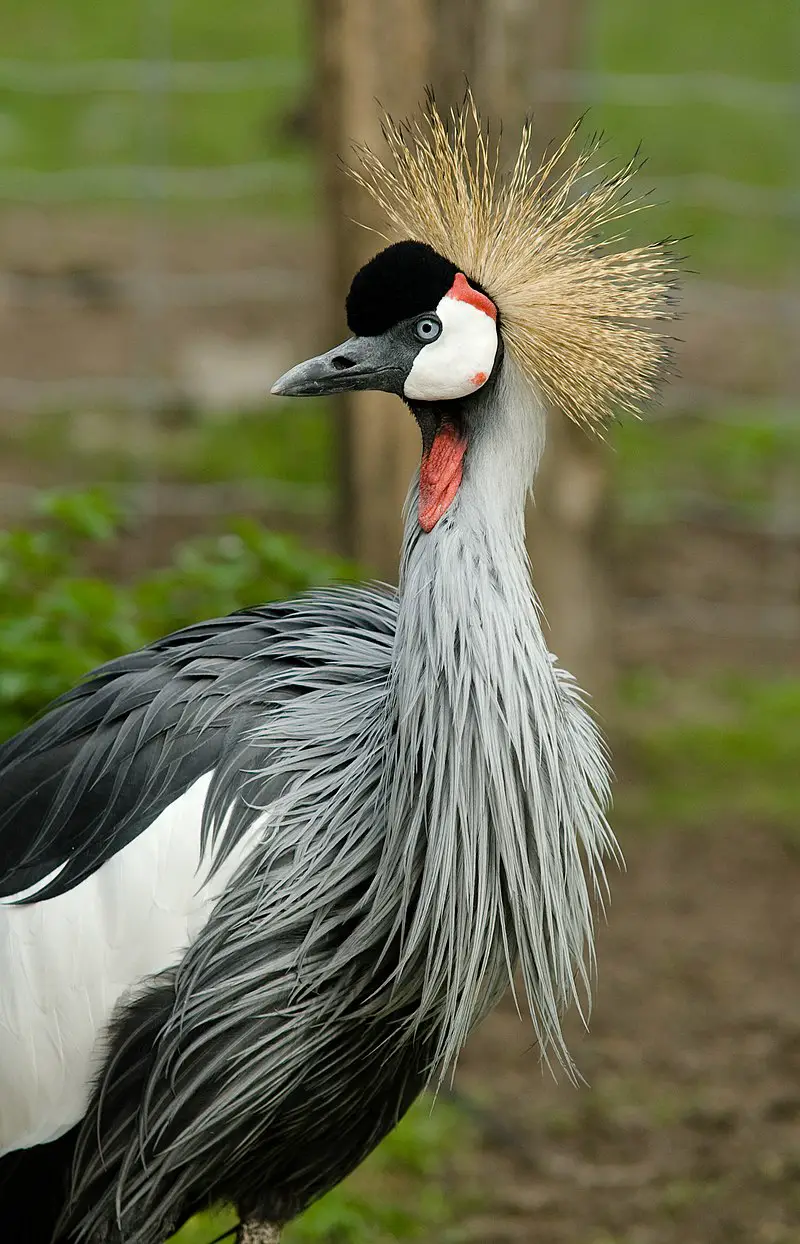
The Gruiformes is an order of birds which contains a large variety of families, both living and extinct. They are found all over the world in many different habitats, including wetlands and grasslands.
The name comes from Latin for “crane-like” due to their similar appearance to cranes. Many members of this group have long legs adapted for wading or running on land depending on species.
They also typically have long beaks used for hunting prey such as insects and small animals like fish, frogs and lizards.
Other traits commonly shared by these birds include strong wings with broad flight feathers that help them soar through the air when migrating or searching food sources during winter months.
In addition to these physical characteristics, some Gruiformes also possess vocalizations unique among other bird orders – making them easily recognizable even at great distances.
Scientific classification:
| Kingdom | Animalia |
| Phylum | Chordata |
| Class | Aves |
| Clade | Gruimorphae |
| Order | Gruiformes Bonaparte, 1854 |
49. Cinclidae
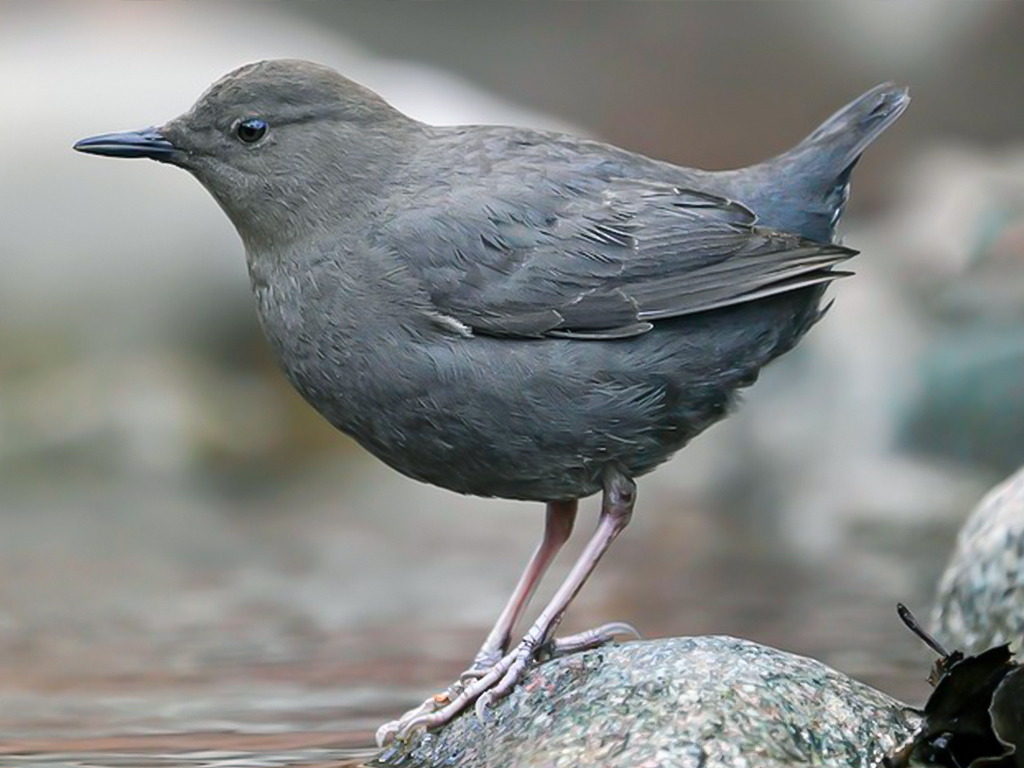
The Waxwing is a small passerine bird known for its wax-like wing feathers. They have pale gray bodies with bright red waxy tips on their wings and tail feathers.
Their heads are crested, which makes them easily recognizable in flight. These birds live primarily in the Northern Hemisphere, ranging from North America to Scandinavia and Siberia during winter months before migrating southward in late summer or early fall.
During migration they can be found around riparian areas as well as urban parks and gardens where food sources such as berries are plentiful.
Waxwings feed mainly on fruits like rowanberries, cedar apples and hawthorn berries but will also take insects when available.
As sociable species these birds often flock together forming large groups of up to hundreds of individuals at times.
50. Ciconiiformes
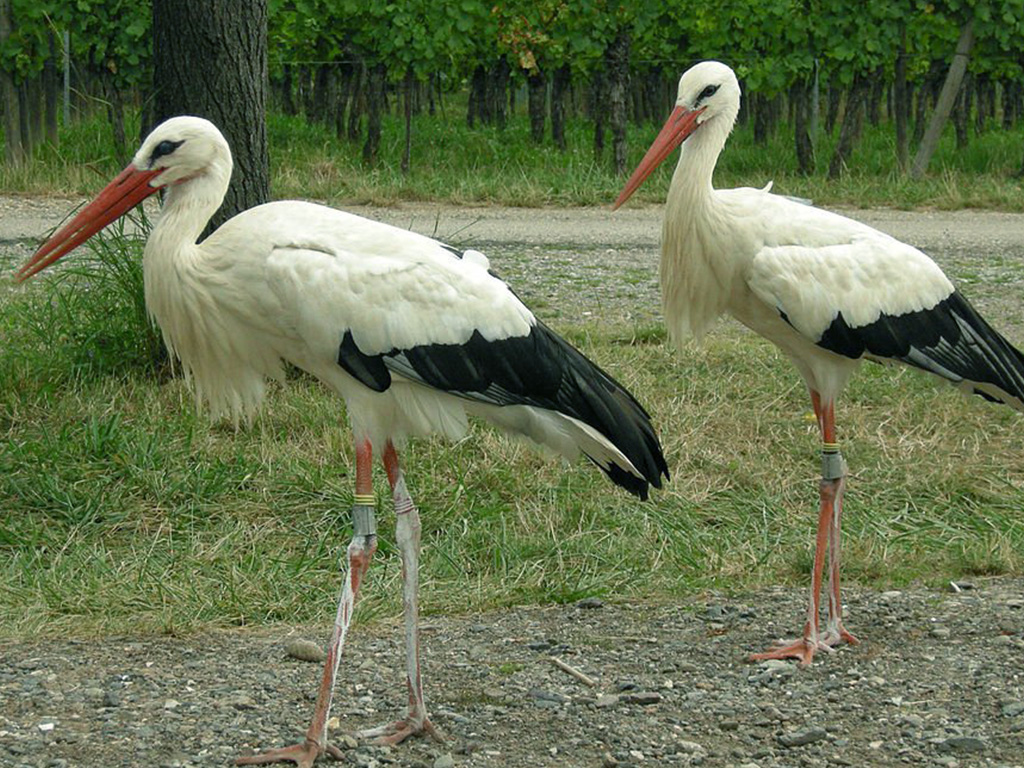
The Waxwing is a small passerine bird known for its wax-like wing feathers. They have pale gray bodies with bright red waxy tips on their wings and tail feathers.
Their heads are crested, which makes them easily recognizable in flight. These birds live primarily in the Northern Hemisphere, ranging from North America to Scandinavia and Siberia during winter months before migrating southward in late summer or early fall.
During migration they can be found around riparian areas as well as urban parks and gardens where food sources such as berries are plentiful.
Waxwings feed mainly on fruits like rowanberries, cedar apples and hawthorn berries but will also take insects when available.
As sociable species these birds often flock together forming large groups of up to hundreds of individuals at times.